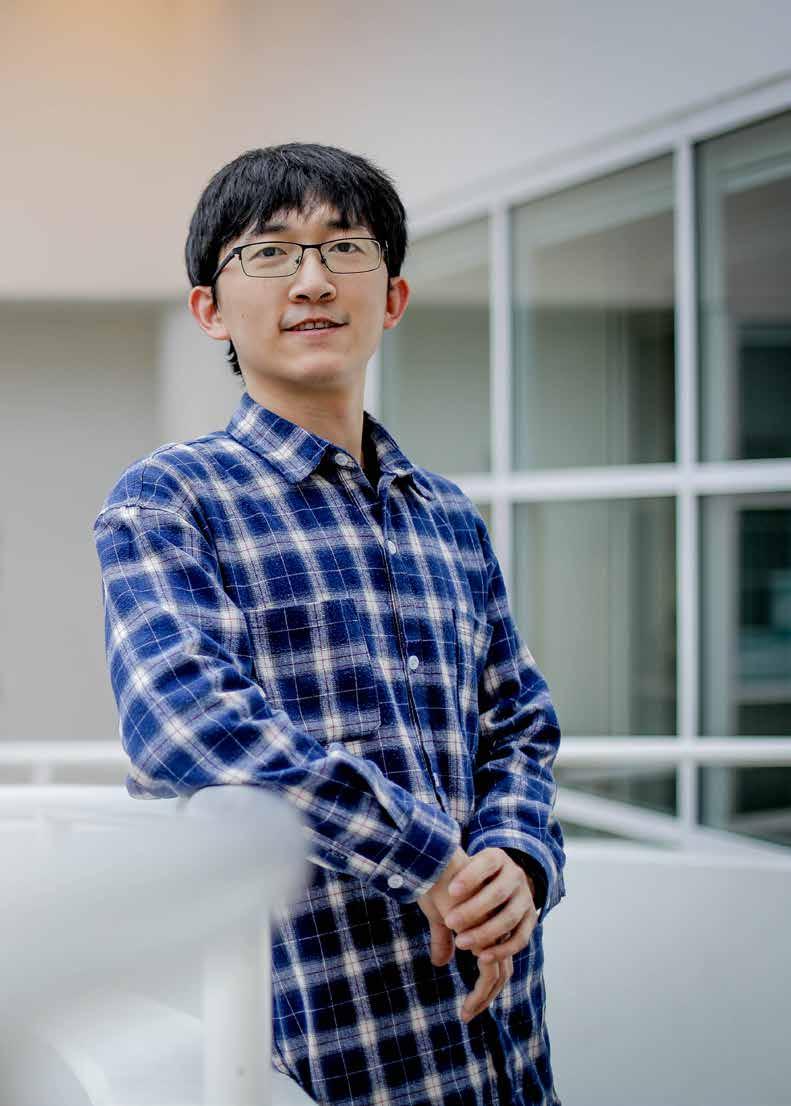GAME WINS




Huysmans,
Technology
Leuven.
of
of
Bonte) Kris Henrioulle a.i.,
Eneman, Chrisje Haenen, Hilde Lauwereys,
Van Cauter, Louis van Hoye, Bart Vanrumste,
Van Cauter


Thepandemic outbreak of COVID-19 has disrupted virtually all aspects of human life. It has broken rhythms and routines, shattered patterns and norms, and exposed the best and worst of humanity and human institutions. Universities and institutes of higher education worldwide were not spared either.
On 16 March 2020, KU Leuven switched overnight to digital education. At the same time, the development of a mixed educational model was started, based on the principle ‘online when possible, on-campus when necessary’. This mixed model went ‘live’ on 21 September. In the first weeks, the user numbers on the digital learning platforms and the livestream service broke all records. Both professors and students quickly found their way to new forms of work, tools and technology.
In our Faculty, ‘Going Digital’ was accompanied by another radical operation: the implementation of a new engineering curriculum. This not only focuses on mastering the technology, but also on numerous other qualities and capabilities that companies expect from an engineer. At the same time, students are given more responsibility for their learning process, the possibilities for personalizing their study programme are increased and contacts with professional practice are intensified. The aim of the operation is to educate versatile and creative problem solvers and developers, who think across disciplines, and for whom lifelong learning is an indispensable part of the job. In this issue, we pay ample attention to the curriculum reform and to one of its most illustrative emanations: the Engineering Experiences.
Despite the pandemic crisis, our Faculty’s international activities continued in 2020. This is evidenced by the cooperation agreement with two new partner universities in India and China, a top position in the board of directors of The European Society for Engineering Education (SEFI), an Honour Award from the Society of Manufacturing Engineers and the participation in international projects in Aruba, Ethiopia and Ukraine. Furthermore, Technovation Hub has joined the Design Factory Global Network and the Solar Team became European champion with its selfbuilt solar-powered racing car. A new Erasmus Mundus Master in Imaging & Light Extended Reality was launched at Ghent Technology Campus. Two international students won the first KU Leuven KICK Award with their innovative project and alumnus Lin Zhang became the first president of the new KU Leuven Alumni Chapter Beijing. You can read all about it in this issue. Contrary to expectations, the number of international students
continued to grow. On the Leuven Campus, there is even an increase by 22%, mainly due to female newcomers. The fact that students from all over the world still find their way to our faculty is a source of hope.
COVID-19 has turned the world upside down. In a number of respect, the malignant virus has also activated and accelerated necessary innovations. The spectacular digital transformation in education is a prime example of this. This turnaround was necessary anyway, not because of the virus, but to educate suitable engineers and professionals for the 4th Industrial Revolution currently taking place.
The calm determination with which Dean Prof. Bert Lauwers has united, expanded and strengthened the Faculty of Engineering Technology over the past four years has been rewarded. He was re-elected with brio on 10 February 2020. Keeping course where possible, adjusting when neccessary, will be the adage of his second term of office.
Anadage is an idea or a wisdom that has established its value. It is generally endorsed that Prof. Lauwers’ policy falls under this heading. Strategic objectives such as the profiling of the study programme, the styling of the multicampus programme and further internationalisation are in full swing and have already led to new insights and impulses for further developments.
“The most far-reaching enterprise is and remains the programme reform”, according to Prof. Lauwers. “Colleagues of all campuses have buckled down to the renewal of the curriculum. This exercise has set an unprecedented dynamism in motion. We set off for a trajectory of at least another four years, of which the outcome should not only be a clear-cut profile of the programme, but also a true multi-campus faculty every campus can identify with”.
During Prof. Lauwers’ first term of office, no less than six new additional programmes saw the light of day: postgraduate and international master’s programmes. Each of them has great potential for internationalisation and lifelong learning.
Over the past four years, the number of PhD students has increased exponentially. According to Prof. Lauwers, the inclusion of a ‘valorisation’ component in each PhD has undoubtedly contributed to this growth. “In any case, it has taken the PhD student out of his/her ivory tower and put him/her with both feet in the work field. If we can now convince the companies of its added value, we are on the right track here too”.
The new curriculum offers students an unprecedented range of opportunities to develop, i.e. to orientate themselves more broadly or to delve further into elective packages and multicampus modules. Prof. Lauwers also wants to give new impetus to student participation at both local and faculty level.
As far as human resources policy is concerned, according to Prof. Lauwers the next coming years it will not be easy to find suitable profiles for vacant or new positions. “That is why I do not think it is wise to link educational work methods too strongly to statutes”.
Internationally, Prof. Lauwers has contributed to a breakthrough. “The influx of foreign students into the Englishlanguage bachelor’s programme has increased considerably in recent years. At the same time, we are seeing a growing number of international master’s programmes. What the impact of the corona crisis will be here remains to be seen. As far as international cooperation is concerned, I am in favour of a limited number of strategic partners in different regions for the structural mobility of students, professors and researchers”.
Prof. Lauwers also wishes to pursue a similar ‘quality first’ policy in the relationships with the industry. “It comes down to making the expertise available on our campuses even more accessible to regional enterprises. The other way round, I also want to inject even more business know-how into our study programmae via
guest lectures and part-time positions for seasoned entrepreneurs”.
Transparent policy and management will remain a priority for the Dean in the coming years. “A well-oiled internal communication is indispensable in this respect. A large university as well as a multicampus faculty counts numerous active administrative and advisory committees. Their interoperability may be further optimised. The regionalisation of the education committees is already one step towards enhanced effectiveness”.
On 11 May 2020, the Faculty Council approved the composition of the faculty’s new policy team. In the coming years, the Dean will be supported by two Vice Deans. Prof. Dorine Bruneel, former Vice Chair at Ghent Technology Campus, succeeds Prof. Greet Langie as Vice Dean for Education. Prof. Koen Eneman, former Chair at Group T Leuven Campus, takes on the task of Vice Dean for International Affairs. With both Vice Deans, Prof. Lauwers is surrounded by experts who have earned their spurs in the field.
A seasoned dean, Prof. Lauwers knows first-hand that the implementation of a widely supported faculty policy takes time and energy and cannot be rushed into. A good guideline here is Vincent Van Gogh’s alleged quote : ‘great things do not come about on impulse, they are the result of many smaller things being brought together’. A multi-campus faculty is no exception.
On 10 March 2020, the Society of Manufacturing Engineers (SME) announced its annual International Honour Awards.

The prestigious Eli Witney Productivity Award was granted to Prof. Bert Lauwers, Dean of the Faculty of Engineering Technology, for his high-level contribution to manufacturing production,
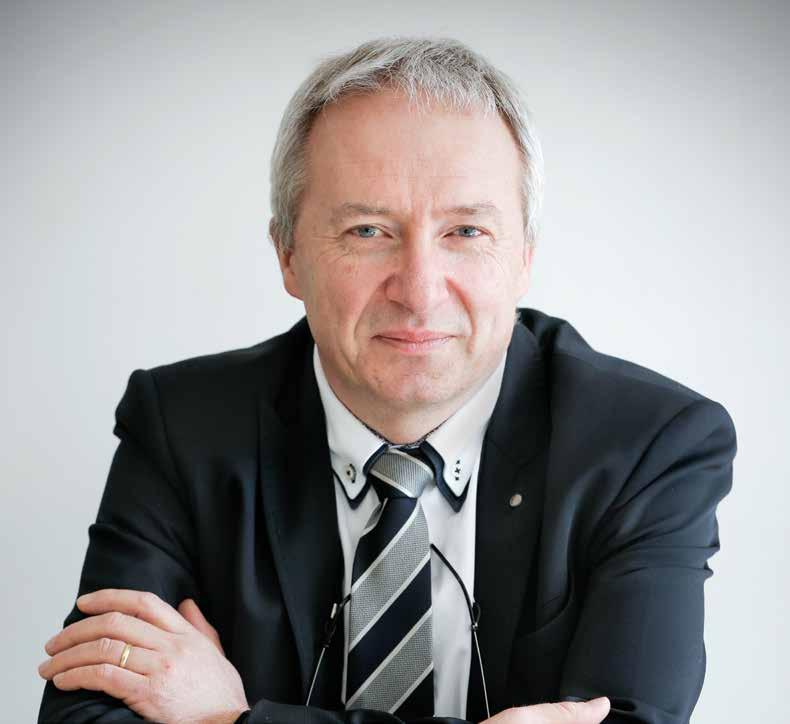
research education and scientific publications.
SME is an association of professional educators committed to promoting and supporting the manufacturing industry. SME helps manufacturers innovate, grow and prosper by promoting manufacturing technology, developing a skilled workforce and connecting the manufacturing industry.
“We are proud to recognise the distinguished honourees for their essential and ongoing efforts in this vital industry”, said Sandra L. Bouckley, Executive Director of SME. “Our five awardees have changed the landscape of manufacturing and SME, making both stronger, more advanced and inclusive than ever before”.
“
Strengthening the international position of the Faculty of Engineering Technology. That will be the Vice Dean’s challenge for the next four years. It doesn’t seem like a titanic task at first thought. Does the faculty not yet maintain close contacts with universities in more than 40 countries? Can students not yet swarm out to 140 Erasmus destinations? What more does the Vice Dean aspire?
Notmore, but differently”, Prof. Eneman answers. “Internatio nalisation should no longer be measured in terms of the number of partner institutions. In line with the Truly International concept in the strategic plan of KU Leuven, we want to evolve towards a limited number of strategic partners in specificly demarcated regions for structural cooperation and mobility of students, professors and researchers”.
Prof. Eneman studied Electrical Engineering at KU Leuven. After his PhD in Applied Sciences, he worked as a researcher and post-doc at ESAT-SCD (the current ESAT-STADIUS research center) and at the Research Group Experimental Oto-rhino-laryngology of KU Leuven. In 2004, he joined the then Group T University College as a lecturer and researcher at the e-Media Lab. In 2012, he was promoted head of the engineering department. In this position, he smoothly steered the integration of the university college into KU Leuven in 2013. As campus chair, he transformed Group T into a leading international campus of the young Faculty of Engineering Technology. Therefore, it did not come as a surprise that the dean addressed Prof. Eneman to take on the new appealing position of Vice Dean for International Affairs.
“Internationally, the faculty’s campuses
travel at different speeds”, Prof. Eneman notes. “This is partly a legacy from the pre-integration era that cannot be ignored. It is not in itself negative either. On the contrary, every campus has its international trump card. In Ghent and Bruges, for example, there is expertise in international research. De Nayer Campus and Diepenbeek Campus are well acquainted with Internationalisation at Home. Geel Campus has experience in collaborating with developing countries. And at Group T Campus, an original 2+2 formula has been established for the bidiplomination of foreign students. In Leuven, you can also follow the entire engineering programmes in English. Meanwhile, international master’s programmes have already started at Ghent Technology Campus, at De Nayer Campus, and will be soon at Geel Campus. Erasmus is well established everywhere, both in student mobility and in capacity building projects. So there is no shortage of initiatives. What is required is a faculty international policy to coordinate and optimise them”.
In this respect, the new Vice Dean feels strengthened by the circumstances. “The EU’s Erasmus programme is currently undergoing a thorough rethink. There is the earlier mentioned strategic policy of KU Leuven with the establishment of a university-wide Global Exchange Network. In the context of the curriculum reform, the Faculty itself is providing for a stronger
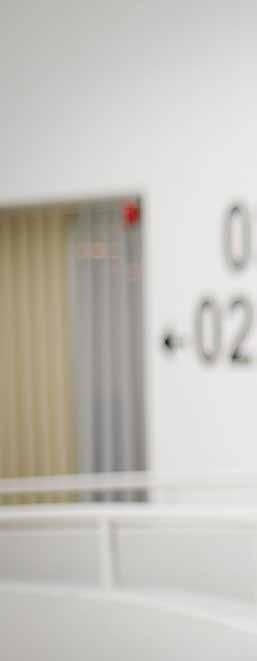
embedding of education in the international policy. The message is always the same: quality takes precedence over quantity. Long-term structural cooperation becomes much more important than one-off or short-term initiatives”.
“You don’t pursue a policy on paper. A policy supposes management and organisation”, continues Prof. Eneman.
“The new organisational structure is still being developed. It should make it possible to share expertise on the campuses and deploy it on a faculty level.
The current task force on Internationalisation, which is mainly operational, can continue to function. The
expertise group will be transformed into a Faculty Council for International Policy, reinforced with representatives of the permanent education committees to strengthen the link with education”.
“International recruitment remains a priority”, confirms Prof. Eneman. “As far as upcoming engineering talent is concerned, the Flemish market has reached its limits. Every year, there are some shifts in the student populations, but currently growth has to be sought in tapping foreign sources, in a wellconsidered and selective manner”.
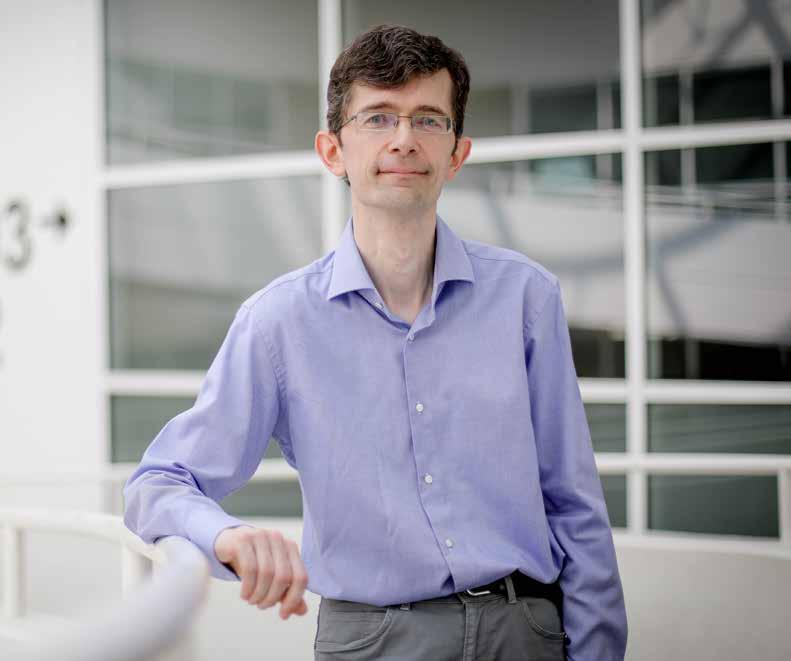
In the Vice Dean’s policy, there will also be room for research. “All research
groups already have their own international network and no longer need to be convinced of the importance of internationalisation.z There is already a great deal of consultation and cooperation within the research departments of the Science, Engineering and Technology Group of KU Leuven. The faculty’s international policy will play a facilitating and supporting role here in order to further develop international research at our campuses”.
Yves PersoonsThe European Society for Engineering Education (SEFI or Société Européenne pour la Formation des Ingénieurs), the largest and most important network of all those involved in training engineers on this continent, is flying this flag.
October 2019, Prof. Yolande Berbers (Faculty of Engineering Science) heads this prestigious organisation with Professors. Tinne De Laet (Faculty of Engineering Science) and Greet Langie (Faculty of Engineering Technology) at her side as directors. They tell the story of SEFI and the course they will take.
The new president takes off immediately.
“KU Leuven was co-founder of SEFI in 1973 and has all these years played a prominent role in the management and operation of the organisation. Our university delivered several chairs, but as far as we know it is the first time that three female KU Leuven professors hold a seat on the Board of Directors, consisting of 22 directors”.
The Leuven triad obviously is not caught unprepared. Prof. Yolande Berbers previously held the position of VicePresident of SEFI. Prof. Tinne De Laet has been Director and Chair of the Special Interest Groups on Engineering Education Research for three years. And Prof. Greet Langie was Chair of the Special Interest Group on Physics and is currently Committee Chair of ‘Capacity Building’.
“SEFI is not an association or exclusive club of engineers”, explains Yolande Berbers. “Our core business by the way is not engineering per se, but education for engineers. Numerous actors play a role in this versatile task. Engineers, obviously,
but also educational developers, supporters, technologists, researchers and providers. Our members include not only some 120 universities and institutions of higher education, but also rectors, deans, professors, students and representatives of both professional associations and the industry. We can state that SEFI gathers some 1 million engineering students and 150,000 academics. By unceasingly working on innovation and excellence, we strive to improve the image of the engineering profession and highlight the indispensable role that engineers play in business and society”.
“SEFI’s scope is so wide and comprehensive that one inevitably has to make choices,” Yolande Berbers continues. “That is why five priorities have been set. These include questions such as How do we make engineering education (more) attractive to young people? How do we close the gap between education and work? How do we stimulate students’ and graduates’ mobility in Europe and in the world? How do we introduce digitisation into education and which educational technologies do we preferably adopt? And finally yet important, how do we put engineering education on the map as a field of research? After all, it is clear that educational innovation in the long term may have an impact, provided it is underpinned by sound scientific research. In the education industry, too, research and development are inseparable”.
“SEFI acts at different levels”, says Prof. Tinne De Laet. “The field work takes place in the so-called ‘Special Interest Groups’. There are currently eleven such groups with themes ranging from ‘Mathematics’ and ‘Physics’ to ‘Ethics’ and ‘Gender and Diversity’. Each group frequently organises workshops and study days where experiences and best practices are exchanged.
There is also the ‘European Engineering Deans Council’ and the annual ‘European Convention for Engineering Deans’, of which the 2019 edition took place in Leuven. The high mass is undoubtedly the ‘SEFI Annual Conference’, where all findings are presented and imperative policy decisions of the institutions are clarified”.
As a European organization, SEFI plays an important role in projects such as ERASMUS+ and HORIZON 2020, for example Prof. Greet Langie’s PREFER project. “PREFER stands for ‘Professional Roles and Employability of Future Engineers’. It aims to help future engineers identify their strengths and growth potential and to familiarise them with the professional roles they may play in their future careers. It is worth mentioning that the competence tests resulting from this project will be implemented in 2020-2021 in the renewed education programme of the Faculty of Engineering Technology. This example illustrates that SEFI’s accomplishments find their way into educational practice”.
The Leuven triad does not lack ambition. Key concepts in the course to be followed are: strengthening, deepening and broadening.
Prof. Yolande Berbers wants to use the presidency to further develop SEFI as an organisation, both quantitatively and qualitatively. In practice, this means attracting more members and engaging more top universities. For example, she is planning a ‘Tour de France’ in order to gain a firmer foothold among our southern neighbours.
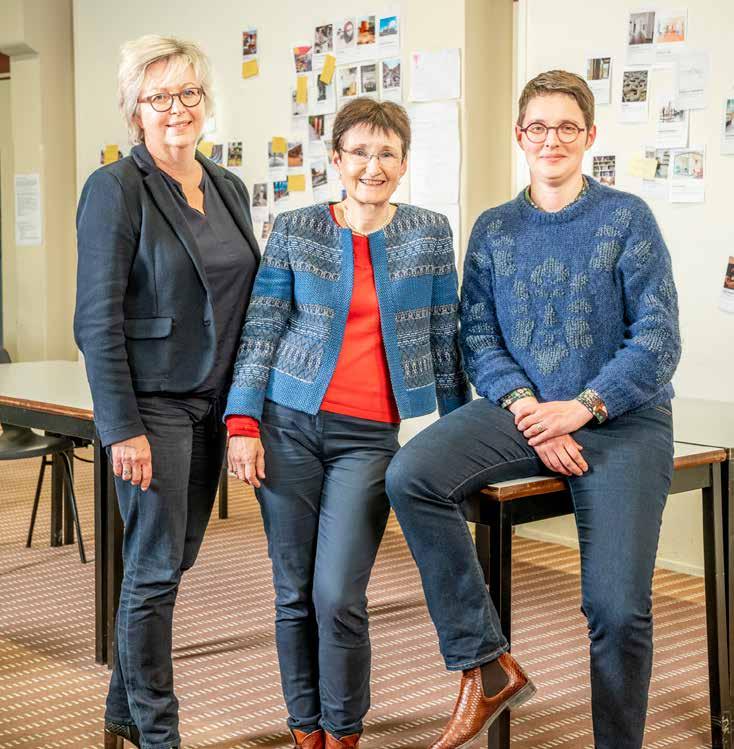
Prof. Tinne De Laet will further concentrate on the ‘Special Interest Groups on Engineering Education Research’, more specifically on a better matching of supply and demand and a more efficient flow of research results throughout and outside
the organisation. Vital supporting tools are the bimonthly ‘European Journal of Engineering Education’, the monthly electronic newsletter, the SEFI Annual Reports and a wide range of papers.
Prof. Greet Langie sees her mission as essentially broadening, and wants to make the European organisation a credible player on the world stage. “SEFI already engages with global organisations like UNESCO, the World Federation of Engineering Organizations, the International Society for Engineering Education and the American Society for Engineering Education. It is time to
sharpen the viewer’s focus on the East, on China, India and South-East Asia amongst others. The network that the Faculty of Engineering Technology has built up there may serve as both a starting point and an entry point. Because here too, the saying goes: when the tide is out, the beacons are set”.
One thing is certain: these are busy days for the Leuven triad. The ladies’ response is unanimous: “We did not come in this by chance. It is the culmination of many years of dedication”.
Jelle De Borger, Yves Persoons Prof. Davy Pissoort Prof. Frank Leferink
Prof. Davy Pissoort Prof. Frank Leferink
This year, KU Leuven Campus KULAK granted Bruges Campus its first Ambassadors Chair of the Faculty of Engineering Technology. The title has been awarded to Prof. Frank Leferink, Chair of Electro-Magnetic Compatibility (EMC) at the University of Twente and also technical advisor at Thales Netherlands and manager of the Thales Network of Excellence on EMC. The ambassadorship is the culmination of many years of collaboration with the research group Mechatronics at Bruges Campus.
TheAmbassadors Chair is actually an initiative of KULAK, our sister campus in Kortrijk”, says Prof. Davy Pissoort, specialist in electrical and electronic systems at the M-Group. “Every year, KULAK awards this title to an internationally renowned academic whose research is closely related to what happens on campus. By proclaiming Prof. Leferink as Ambassador of 2020-2021, we hit two targets with one shot. Frank is not only a global authority in one of our group’s main research topics; he also has both feet firmly in business practice. This symbiosis is virtually the DNA of education and research on our campus and, by extension, the faculty. The recent European ITN project “PETER” on electromagnetic risk management is a good example of this”.
Prof. Leferink specialises in electromagnetic interference, or EMI. He describes his field of expertise as follows: “We all know EMI when the sound from a loudspeaker is disturbed by a series of beeps coming from a mobile phone. Pretty annoying, but not bad in itself. It becomes problematic when crucial high-tech equipment in cars, aeroplanes, hospitals, nuclear power plants or just in your own home turns out
to be sensitive to EMI. While with conventional devices the risks are usually visible or audible, with high-tech devices or systems the situation is rather different. Invisible forces can be at work there. This means that as electronic devices become more complex and the user more dependent on them, the risks increase accordingly. What’s more, there may be several EMIs simultaneously interfering with each other”.
“Until today, most engineers are not sufficiently aware of the importance of proper EMI risk management”, Prof. Leferink continues. “This has to do with the fact that the education initially still functionally aims at rapid R&D and production. This puts risk factors to the back burner. The tragic accident involving an electric wagon in Oss two years ago is a sad example of this. Just as it was entering a railway crossing, the brakes failed. Four children died. Not safe enough for passenger transport, the TNO research centre arbitrated after the disaster. The cart was equipped with the risk protection of a forklift truck for moving goods”.
“Complete immunity for EMI is a noble goal, but not feasible in practice,” says
Prof. Leferink. “That is why we are making every possible effort to make EMI management as much risk-based as possible. This requires an interdisciplinary approach covering the entire life cycle of the product or system. This involves chance and risk analysis, risk reduction, verification and validation. The aim is to build in an inherent EMI-robustness from the early design phase”.
The scope of the research is virtually endless. Nearly all industrial sectors are involved and interested: shipping, aerospace, transport and transportation, defence and (cyber)security, telecommunications, banking and insurance, micro-electronics, etc. No wonder Prof. Leferink sees a ‘bright future’ for his profession.
For the M-Group at Bruges Campus, the Ambassadors Chair is both an important boost and an asset. “Electromagnetic compatibility (EMC) has been in the centre of our attention since the beginning of the 90s”, confirms Prof. Pissoort. “Key concepts here are reliability, robustness and safety in complex and/or rough conditions. Thanks to our cooperation with the manufacturing industry - large companies as well as SMEs - we have become an integral part of the economic life in the region and beyond. With the help of our new ambassador, we can significantly increase our impact on industry and social life. In that respect, the future looks bright for the M-Group”.

How do you put an education programme on the map that allows young talent to grow and blossom into versatile engineers? How do you maximise the benefits of a multicampus faculty? These were the challenges that the Faculty of Engineering Technology faced three years ago when it decided to reinvent the engineering technology programme. The first bachelor’s year was launched this autumn. Prof. Greet Langie, former Vice Dean for Education and pioneer of the ‘Gideons gang’ of programme reformers, and Jeroen Buijs, former Vice Campus Chair at Group T Leuven Campus, explain.
Ourcompanies - and by extension our society - are asking for versatile, inquisitive and creative ‘problem solvers’ and developers,” says Prof. Langie. “Engineers deployable on many fronts. Engineers who can link disciplines in order to come up with new solutions and put them into practice. We are therefore starting the programme with a solid polyvalent engineering programme for all the students on our campuses. (This new programme does not apply on Campus Diepenbeek.) Their entire programme now rests on four pillars. In the first pillar, ‘Engineer and Science’, we lay a foundation and students immediately see how the sciences are applied in technology. The ‘Engineer and
Technology’ pillar also starts with a polyvalent training that forms the basis of the four graduation tracks in the bachelor’s programmes and ends with specialised training within the eight master’s programmes. In ‘Engineer and World’ we broaden the students’ horizon. And in the ‘ Engineering Experiences ’, everything comes together. Students are challenged to think up and work out concrete technological solutions like a real engineer. It goes without saying, that this also includes skills such as team work, communication and an entrepreneurial spirit. What’s more, from now on these so-called ‘professional skills’ will be structurally integrated in the new curriculum and supervised by experts”.
Wide range, extensive choice
“All this ensures that students will encounter concrete technological issues from the very beginning of their studies,” continues Jeroen Buijs. “Another innovation is that from now on, students can take their curriculum more into their own hands. The range of specialisations, options, electives and modules on six of our seven campuses is such that everyone will find something to suit him/her. In addition, switching between campuses from 2020 onwards is child’s play. Nevertheless, those who prefer to stay on their familiar campus also benefit. In the multicampus modules, everyone at each of our locations can go beyond campus boundaries to immerse him/herself
completely in his/her interests. Remaining mentally mobile does not necessarily imply physically changing campus”.
“We take a similar approach internationally. Of course, we continue to encourage students to participate in international exchange programmes. We are already doing this successfully. At the same time, however, we are also fully committed to expanding the range of English-language education on all our campuses”. This way, we want to attract even more international students and create a real ‘internationalisation at home’. Flemish students are also reaping the benefits of this. They learn to cooperate with other nationalities and deal with diversity, which
contributes to their education as all-round engineers. For both Flemish and international students it offers a training ground for developing communicative and intercultural competences”.
“Last but not least, from 2020 onwards the relationship with the industry is being significantly intensified, which goes hand in hand with our aim to train entrepreneurial engineers,” explains Prof. Langie. “You do not just learn from a book; but also from experience. For example, by spending a day with an engineer right from the start. By visiting companies on a regular basis. By working together in projects. And by creatively taking on assignments

originating directly from the professional practice.
When new entrants instantly can look out on the finality of it, the education programme will also become more attractive. Even those starting an engineering programme are still not fully or not at all aware of how varied and fascinating the engineering profession is. Therefore, we want to highlight this even more and better. Our message to young people is clear: on each of our campuses you can indulge today as the engineer of tomorrow”.
The renewed education programme of the Faculty of Engineering Technology focuses not only on the mastery of technology, but also on many other qualities and capabilities expected of an engineer. A striking novelty in the programme is the ‘Engineering Experience’, which in the first bachelor’s year alone accounts for 9 ECTS. What does this programme component stand for? And what is there to experience? Christel Willemaerts, coordinator at Group T Leuven Campus, gives the answer.
Anengineering experience is both a programme component and a work method”, Christel explains. “It belongs to the category of alternative educational work methods that aim to encourage problem-solving skills, independence and creativity as well as to convey professional competences such as communication, teamwork, entrepreneurship and critical reflection. What makes the Engineering Experience special is that it ‘touches’ the students and is therefore memorable -thus instructive. Pine and Gilmore, who coined the term ‘experience economy’, make a distinction between ‘absorption’ and ‘immersion’.
Whereas classical project work often involves absorption, an experience provides immersion, a ‘total experience’ that also appeals to emotions and thus provides greater and longer memory value. What makes an engineering experience haunting? To begin with, the attractiveness of course, but other factors also play a role: the challenge, the element of competition, the reward or -simply- the fun. Engineering experiences make learning more fun”.
“In the experience of engineering, you can go all the way,” Christel continues. “You are challenged to tap all your knowledge, skills and attitudes and bring them together. Furthermore, you can use your own talents or competencies acquired elsewhere. This occurs in assignments of which the outcome or result is not always fixed in advance. The more open the assignment, the more you can apply your creativeness”.
“Not only the degree of openness varies, so does the approach: individually or in a team. Furthermore, the complexity and authenticity, i.e. the degree of involvement of the companies, increase as the programme progresses. Important is that a concrete result or a tangible product is expected from the student or the team. This learning by trial and error greatly
contributes to the intensity and learning potential of the experience. The ultimate goal of the Engineering Experience is to be a reflection of the future professional life”.
Educational learning activity Engineering Experience 1 in the first bachelor year consists of four educational activities; an integrated lab, a project, spatial insight & CAD and a series of supporting seminars focusing on professional competences. “Within, students learn the methodologies and skills required to cope with increasingly complex assignments and challenges in the course of their studies”, says Christel.
The Integrated Lab consists of carrying out delineated hands-on assignments involving various disciplines. The experiments cover gravity acceleration, mass acceleration, microscopy and electrochemistry. The project is an open assignment that contains elements from the specialisations from which the students have to choose after the first year. The student teams will build a part of a large Rube Goldberg machine; an ingenious device that produces a mechanical chain reaction that reaches its goal at the end. “Making chain reactions not only creates tension and suspense, but is also very instructive”, Christel notes. “Energy conversion, friction resistance, strength calculation, sensors, actuators, materials, construction techniques ... the students can really show everything they have to offer”.
Spatial insight & CAD is about reading, interpreting and developing technical drawings. These are used in the examples and designs that have to be carried out in the project.
The seminars Professional Competencies are an essential part of Engineering Experience 1. “Here the students are familiarised with the scientific framework and acquire specific skills such as writing
skills, project management, presentation techniques, group dynamics and creativity”, Christel explains. “A faculty team of experts has been put together to provide input. The competencies are practiced within the project and the Integrated Lab”.
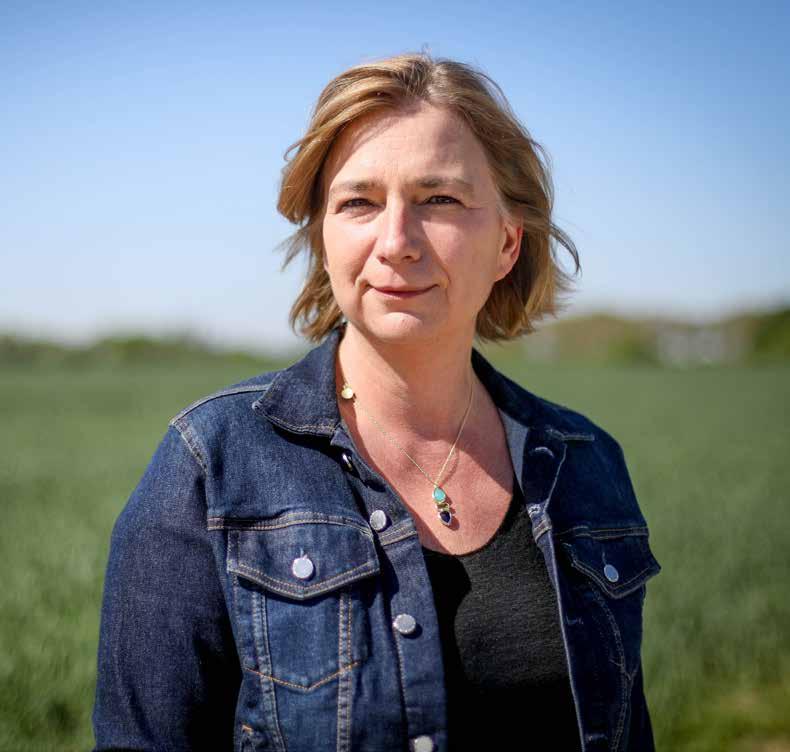
“The experts are also responsible for the coaching of the students. The same coach supervises the student, or the team, throughout the entire Engineering Experience. Within the same component, the coach cannot simultaneously teach or supervise the subject matter of the project.
In this way, there is no mixing of roles and the students clearly identify the right recipients for their questions”.
The new curriculum, including Engineering Experience 1, started
in September 2020. “The experts are already working hard on a follow-up trajectory that will make the students’ track records visible throughout their study programme,” Christel reports. “In time, this should result in an e-portfolio linked to a personal development plan in which the students can set their own learning goals and bring in proven competencies. Immediately after their studies, they will have a CV supplement at their disposal to demonstrate their starting competences. And -last but not least- they will have an instrument to keep documenting their development throughout their career. After all, learning never stops. The real engineering experience begins when they start practicing the profession. Our task is to anticipate this in the best possible way”.

As of the academic year 2020-2021, the Postgraduate Programme in Innovation & Entrepreneurship in Engineering is split up. The existing programme will remain identical in structure, but will from now on only consist of in-company projects. The new counterpart aims at bachelor’s and master’s students who want to realise an ambitious team project or have their own start-up in mind. Coordinator Chrisje Haenen presents the Postgraduate Tech Innovations in Ventures and Teams (‘TechInVenT’).
WithTechInVenT we merely want to guarantee the continuity of our student teams”, Chrisje Haenen explains. “The Agoria Solar Team, Formula Electric Belgium, Innovived, CORE, Flacra and iGEM have become the flagships of our faculty and the Science & Technology Group. Students who want to follow their example come to TechInVenT. But there is more. After their studies, several team members effectively stepped into entrepreneurship and started their own company. Such potential entrepreneurs are our second target group. What both groups have in common is drive and passion for innovation and entrepreneurship. As engineers, they want to leave their study and career paths and take their future into their own hands. Even though in many ways this means a leap into the unknown”.
“Unfamiliar grounds require good preparation,” continues Chrisje Haenen. “TechInVenT wants to make sure that prospective engineers and entrepreneurs do not skate on thin ice. That is why we offer them a virtually tailor-made
programme, in which not only technology but also professional skills are covered. We additionally provide intensive coaching by professionals”.
The main part of the programme consists of the team or start-up project (44 ECTS). Students who opt for the team project learn the tricks of the trade from an existing team, which gives them plenty of inspiration to start their own team project. Those who choose the start-up project can count on support and coaching to develop a business plan that will enable them to spread their wings after the programme. “But even those who do not yet have a concrete business idea in mind and still are enthused by entrepreneurship will find at TechInVenT the breeding ground in which new ideas can germinate,” notes Chrisje Haenen.
The programme also embraces a series of workshops provided by business partners of the Technovation Hub Academy, and a package of elective courses, together accounting for a minimum of 12 ECTS.
“Technovation Hub was established in 2016 with the aim of supporting the student teams within the Science & Technology Group and giving new initiatives a chance,” says Chrisje Haenen.
“Launched in September 2020, the Technovation Hub Academy organises hands-on workshops specifically for TechInVenT students on topics such as product design, artificial intelligence, 5G, IP, legislation and digital marketing. To this end, we call on the services of experienced professionals”.
The optional courses enable future team members and starters to personalise the programme even more. “ Students indeed complete this part based on their personal preferences”, Chrisje Haenen confirms.
“From the immense range of courses offered by KU Leuven, they choose what interests them or what they think they will need for their project; it is all up to them. Learning to be an entrepreneur starts with entrepreneurship for your own learning”.
Europe represents the world’s second largest market for education. In order to keep pace with the rapid technological developments, there was an urgent need for cooperation between the main stakeholders: teachers, researchers and entrepreneurs in the field of education and digital technologies. In June 2019, the first European EdTech Network (EETN) was established. Professor Wim Van Petegem, Policy Advisor Learning Technologies at the Faculty of Engineering Technology – KU Leuven, tells the story.
Van Petegem leaves no doubt about it: “The new EdTech Network is a unique opportunity for European universities and companies, big or small, in the EdTech industry to network, share and collaborate. EETN will help us to enhance end enrich our experiences in EdTech, from research to innovation and business. Together we can make a difference in the EdTech scene and improve education all over Europe and beyond”.
EETN is a three-year project funded by the European Commission within the Erasmus+ Strategic Partnership for Higher Education Programme. Four leading European universities – IE University in Segovia (Spain), University College London, KU Leuven and Oulu University of Applied Sciences (Finland) – decided to join their efforts, using their knowledge and broad experience in the field of EdTech, in order to create a collaborative space for all the players on the European EdTech scene.
“The purpose of the new partnership is fourfold”, Prof. Van Petegem explains. “First of all, we want to support EdTech start-ups and entrepreneurs by providing them with the results of research. This is closely in line with the second objective, namely the promotion of entrepreneurship in the field of education and training by supporting innovators in gaining quality and competitiveness. All this must lead to effective collaboration where experience, good practices and knowledge are shared. And finally, it is our goal to give
innovation a boost by promoting ICT tools, pedagogies and methodologies”.
EdTech is a flag that covers many loads. From online learning, artificial intelligence in education, smart schools, virtual and augmented reality applications to lifelong and customized learning. The red line through all this is the idea that teaching should be learner-centred, more flexible and focused on 21st century skills.
“At KU Leuven, we are primarily involved with collaborative learning”, Prof. Van Petegem notes. “Collaborative learning is commonly illustrated when groups of students work together for understanding, meaning or solutions or to create a product of their learning. It includes collaborative writing, group projects, joint problem solving, debates, study teams, etc. Over the past 10 years, technology has become an indispensable factor. The Internet has allowed for a shared space for groups to communicate. Virtual environments have been critical for people to bridge long distances, but still feel like they are part of the group.
Some examples of how technology has been increasingly integrated include ‘Collaborative Networked Learning’ (CNL), which occurs via electronic dialogue between self-directed colearners and experts, while Computer-Supported Collaborative Learning (CSCL) uses technology in a learning environment to help mediate and support group interactions in a
collaborative learning context. Nowadays, collaborative learning is evolving fast as companies start taking advantage of unique features offered by virtual work spaces – such as the ability to record and map the flow of ideas, the use of 3D-models and virtual worlds mind mapping tools”.
“Throughout the lifetime of the project, we are going to organize various activities that will allow us to exchange knowledge and experiences between the staff and the members of our partner organisations, as well as external experts, entrepreneurs and other universities from all over Europe and beyond”, Prof. Van Petegem concludes.
“We will have good chances to meet during our events and collaborate online and to learn more about best practices and methodologies used around the world to enhance innovative education”.
Prof. Van Petegem is already proud that prominent high-tech companies such as IMEC and EPYC have joined the online network. “Our ambition is to become a leading platform where ideas, solutions and information can be exchanged between all our partners to boost the development in the EdTech sector in whole Europe. Moreover, we hope that our events will affect other, indirect beneficiaries, eager to improve education and entrepreneurship through technology by connecting with likeminded peers”.
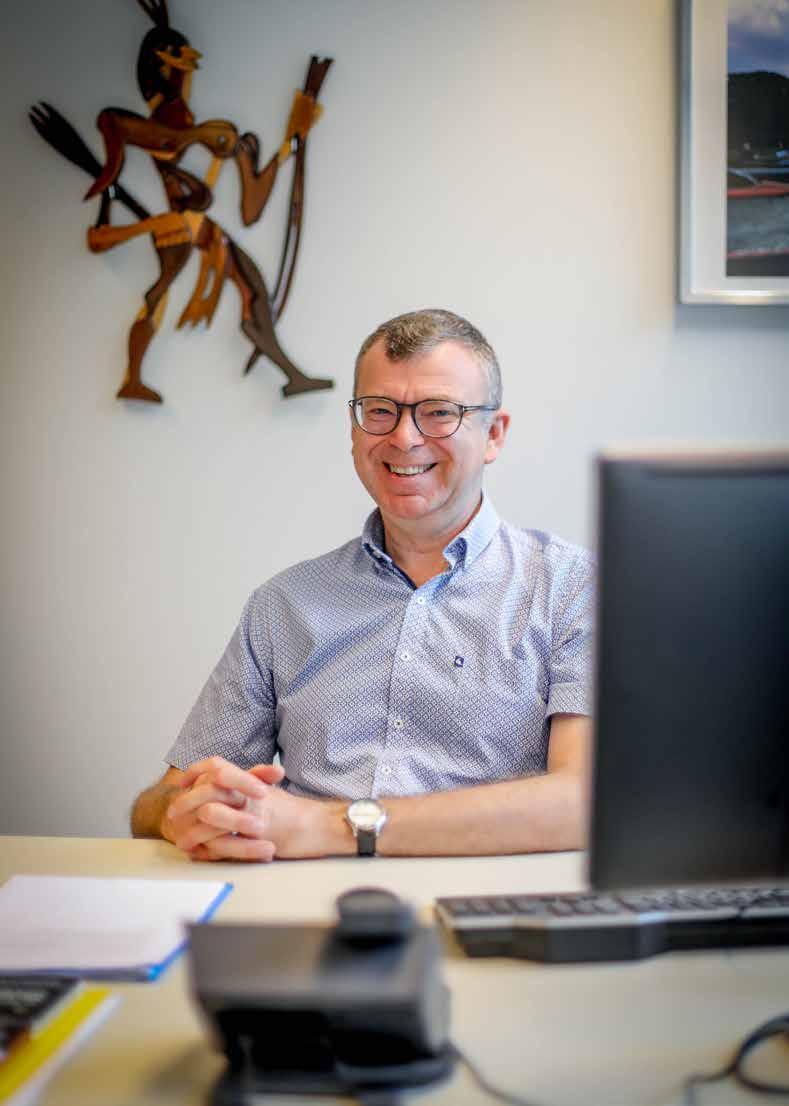 Prof. Wim Van Petegem
Prof. Wim Van Petegem
Ghent Technology Campus has a long tradition in Erasmus Mundus European master programmes. From September 2020 onwards, students can take a brand new programme that leads to an Erasmus Mundus MSc degree in Imaging And Light In Extended Reality.
TheFaculty of Engineering Technology has joined forces with the University of Eastern Finland, the French Université Saint-Etienne and the Toyohashi University of Technology in Japan to set up an international study programme with a focus on the future technologies in photonics, imaging and lighting. The IMLEX master offers courses to the cutting edge of new technologies in these fields.
The IMLEX programme did not appear unexpectedly. The research group in light and lighting technology at the Ghent Technology Campus, led by Prof. Peter Hanselaer, has focused for more than 20 years on research in different aspects of lighting technology. The research group hosts the “Groen Licht Vlaanderen vzw” and works together with a well-developed network of companies active in the sector of light, lighting and energy.
By creating a curriculum linked to these research topics, Prof. Peter Hanselaer wants to attract excellent students and PhD researchers to apply the research in practice. The IMLEX study programme is a two-year master’s programme where students take a mobility track from Finland, to Ghent and Saint-Etienne and then Toyohashi, each for one semester. In the first semester students meet with all basic aspects of imaging and lighting, as well as photonics and optics. They continue their study in either Saint-Etienne for the imaging specialization or at our Faculty of Engineering Technology for the lighting specialisation. These specialisation courses are elaborated in-depth in semester three in Toyohashi University of Technology. The “engineering techology” profile is guaranteed by a company internship and several cases in collaboration with industry. Semester four is devoted to a master’s thesis, which can
be taken at any of the partner institutions or selected research institutes or companies.
The curriculum organised at KU Leuven includes five course modules on lighting science, lighting technology, lighting metrology, lighting design and lighting business. Because engineering students also need to prepare for a study period in

Japan, a course in Japanese language and culture is included, as well as a course unit on academic writing. Here lies another innovative aspect of the IMLEX master’s course: not only the international and multidisciplinary approach is typical, the semester on lighting is also an “interfaculty semester”. The Faculty of Architecture is collaborating with the research group in lighting to cover the
aspects of lighting design in the study programme. Prof. Bruno Depré will teach the course on lighting design.
IMLEX responds to a realistic demand from industry, as is proven by the large number of associate members, most of them companies (e.g. Trilux, Etap, Engie…). The graduates of this study programme will contribute to the next
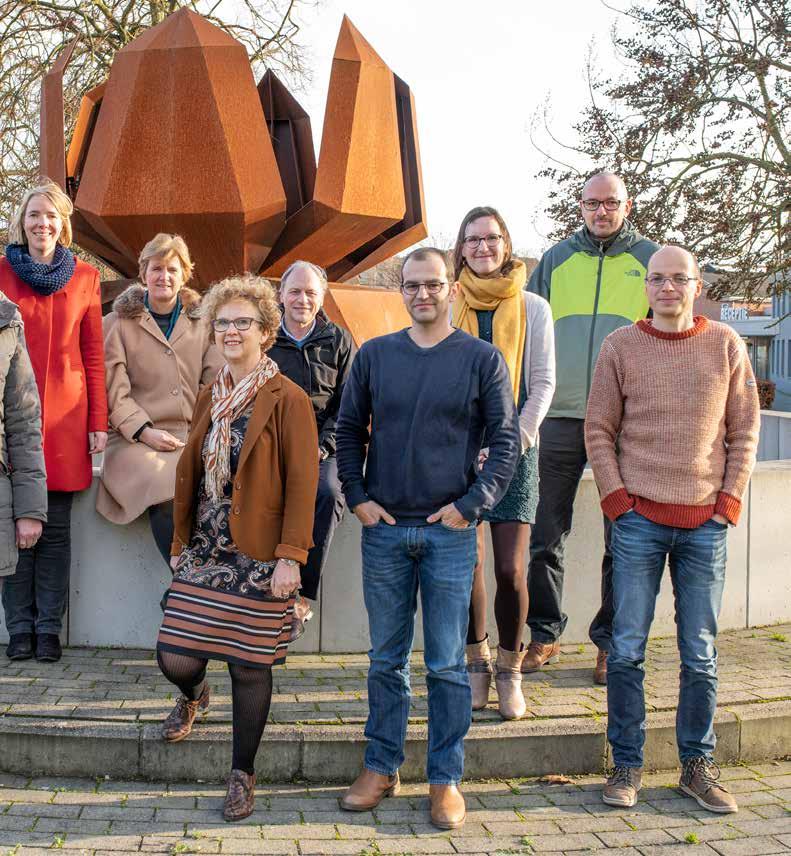
industrial revolution of Industry 4.0, where augmented reality will play a dominant role. The massive interest in this field is demonstrated in the first application round for the academic year 2020-2021: 116 candidates have submitted an application to date.
Hilde Lauwereys www.imlex.org
©TineDesodt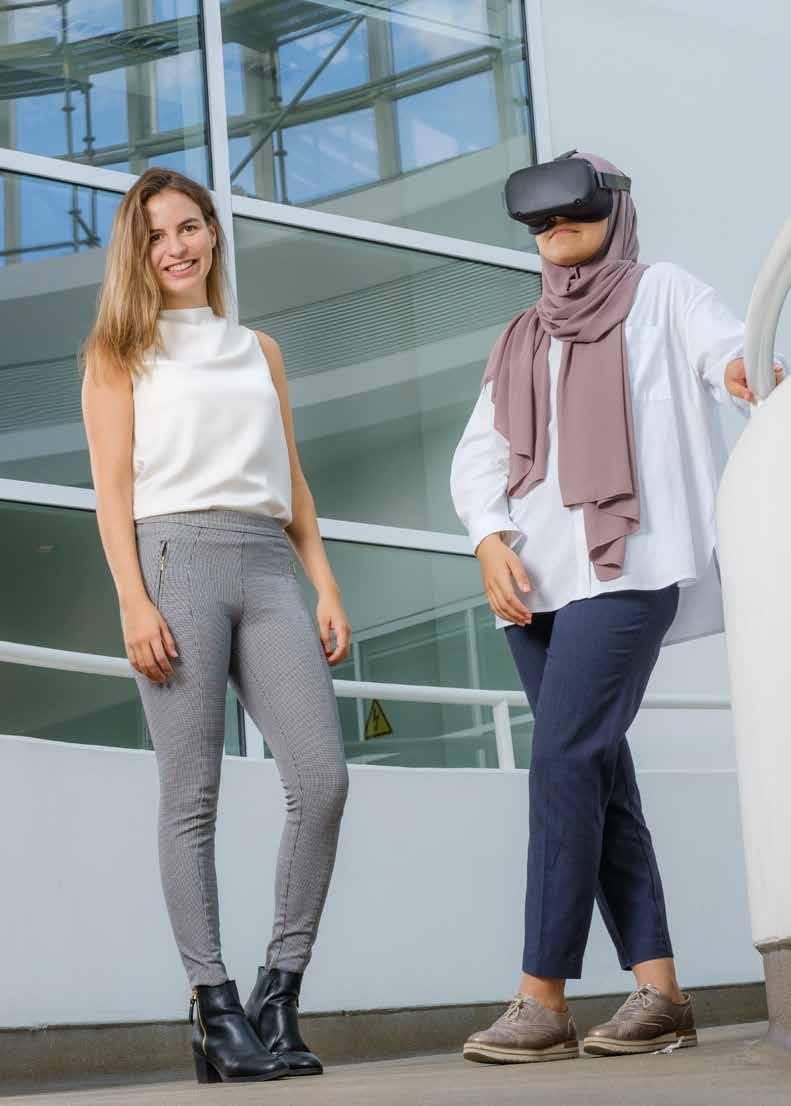
Under the slogan ‘From idea to impact’, KU Leuven KICK team organized its first challenge in the spring of 2020. The assignment was to develop a business plan that addresses a social problem in an innovative way. The CheckR team of Nikte Van Landeghem (Master in Electromechanical Engineering Technology, Group T Campus) and Salma Nachi (Master in Pharmaceutical Sciences) won the Student Award and the Audience Award.
Leuven KICK is part of KU Leuven Research & Development (LRD), the university’s tech-transfer office. “Our task is to promote and support entrepreneurship in the university community”, coordinator Tine Van Lommel explains. “In doing so, we also aim at student-entrepreneurs. We help them translate their innovative ideas into a feasible business model, ready to be implemented in a start-up. Any student with an innovative idea will find a listening ear and a helping hand with us”.
For the first KICK Challenge, forty-five teams submitted an original idea. Eighteen were given permission and support to develop it further. Six of them made it to the finals to compete for three grand prizes. With the Student Award and the Audience Award, Nikte and Salma were prominently present on the honorary stage.
The duo departed from the following facts: “Belgium is thirty percent slower at detecting preventable diseases compared to other EU countries. This phenomenon can be attributed to the fact that Belgians between 20 and 40 years old get less than one check-up a year. At the same time, the same population goes at least three times to the pharmacy over the same time period. This led us to the idea: why shouldn’t the pharmacist play a key role in the early detection of risk patients? After all, pharmacists are highly qualified health professionals. However, the main challenge here is that pharmacists do not have enough information about their patients, and the time available for each patient is rather limited. If we could provide them with a tool to check a number of relevant parameters in a simple and fun way to increase patient participation, this would be an important step forward”.
These ideas resulted in the CheckR kit, which consists of a VR headset, a controller and a heart sensor to measure several cognitive, muscular and cardiovascular parameters such as heart rhythm, blood pressure, memory, vision and motoric skills. Salma explains how it works in practice: “The pharmacist
proposes to the client to play a VR game for about five minutes during which memory and motoric skills are monitored. Via the sensor, cardiovascular parameters are tracked, while other relevant data are measured with the VR headset and controllers. After the game, the pharmacist can give feedback on the client’s general state of health and -if necessary- refer him or her to the doctor or hospital”.
“Both the risk patient and the pharmacist benefit from our kit”, Nikte continues. “The potential risk patient is informed in time and the pharmacist can count on more and satisfied customers, which may result in a higher turnover. Moreover, he or she can build up a network with colleagues, doctors and hospitals. The healthcare system as well as the economy could benefit, because employees stay healthy and can work longer”.
Feasible and profitable Meanwhile, Nikte’s and Salma’s plans for the short and longer term are ready. “We are going to start strengthening our team and bringing in additional competencies”, says Salma. In 2021, we hope to be able to launch our start-up and gain foothold in twenty pharmacies in Belgium. We plan to systematically increase that number until we have 10% of the pharmacies in Belgium as customers. Our financial model is based on a rental price of 150 euro per kit per month. If we achieve the range of 10% that represents a revenue of 76.500 euros per month, which, after deduction of costs, would yield a profit of 26.000 euros. We also want to expand our service with a user platform for our customers and a personal assistance system for high-risk patients based on gamification technology.
In the end, the ambition of both student-entrepreneurs extends beyond quick profit. As committed young entrepreneurs, they dream of introducing their affordable detection technology in developing countries, where the health system is often inadequate and where prevention is infinitely more life-saving than elsewhere.
Yves Persoons
The Agoria Solar Team of KU Leuven continues to pile up the victories. After a first place in the Carrera Solar Atacama in Chile and the world title in the Bridgestone World Challenge in Australia, the team finished first in the European championship in Zolder (Belgium). Now it is looking forward to the Sasol Solar Challenge in South Africa in February 2021.
TheAgoria Solar Team consists of 19 engineering students of KU Leuven with a mission. They aim to do more than just building the most efficient solar racing car and winning championships. By developing a race car that combines the innovative ideas of bright engineering talents with the Belgian and international technologies, the team wants to inspire young people to take an interest in science and technology and raise awareness of renewable energy among the public. “With the support of our Belgian and international business partners, we are convinced that we can act as a catalyst in the process of making commercial solar-powered electric vehicles available to the general public”, says team leader Paul Van Hemeldonck. “We strive to show the world that Belgium is still in the frontline of innovative technology. We also want to show that we are entrepreneurial engineers and worthy ambassadors of our university and its faculties of Engineering”.
In September 2020, the Solar Team took part in the 24 hours race with two solar cars: the Bluepoint built in 2019 and the Punch 2, developed by the former solar team. The Bluepoint, which became world champion in Australia last year, crossed the finish line in Zolder with the highest number of laps. “We owe our victory to a fast car and a well-thought-out race strategy”, explains Romanie Cnockaert, strategist of the Solar Team.
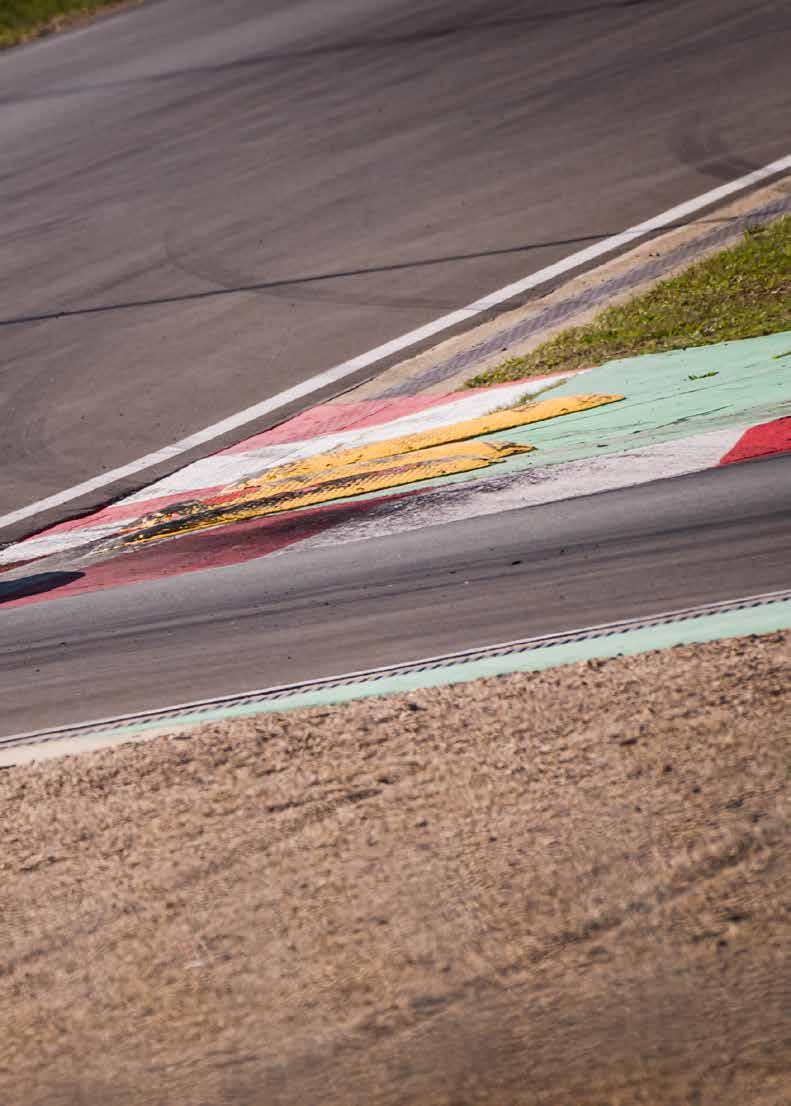
“During the race, for example, it is permitted to recharge the battery twice. We chose to charge only once, which allowed us to drive laps for an extra hour. In this way, we improved the record for the highest number of laps in 24 hours by a fourth”.
The Punch 2, built in 2017, crossed the line in sixth place. “That has everything to do with the age difference”, says race engineer Kenneth Goovaerts. “For each addition, the cars are equipped with the latest technologies and these are changing rapidly. That’s exactly why the Solar Team builds a brand new solar car for the world championship”.
The victory at the European championship is the third in a row for the KU Leuven Solar Team. In 2018, the team finished first after a grueling race through the Atacama desert and mountains in Chile. The following year, the team became world champion at the Bridgestone World Solar Challenge, a challenging race of more than 3,000 km through Australia. Currently, the team is preparing for the next adventure: the Sasol Solar Challenge in South Africa in February 2021.
The Science & Technology Group of KU Leuven is involved in an ambitious project to launch a three-year bachelor’s programme in Science, Technology, Engineering and Mathematics (STEM) at the University of Aruba.
This is an initiative of the Aruban government that is part of the eleventh EDF-OCT Programme of the EU. Professors and researchers of KU Leuven will guarantee the capacity building in Aruba that is needed to develop a research-based education programme. At the Faculty of Engineering Technology, seven academics have committed themselves to give substance to the curriculum and also to supervise four PhD students. We spoke with Prof. Jo Van Caneghem and Prof. Maarten Vanierschot of Group T Leuven Campus.
Sun-drenched pearl of the Caribbean. Tropical, hospitable, vibrant with exotic beaches and culinary delights. The travel agencies are making use of superlatives to promote an island of barely 180 km² with 115,000 inhabitants. No matter how small and paradisiacal this distant part of the Kingdom of the Netherlands may be, Aruba does not escape the global challenges of our time. Sustainability is one of them. “Small islands such as Aruba are very vulnerable in this respect”, Prof. Vanierschot explains. “Not only because they are particularly sensitive to ecological and economic shocks, but also because they lack the human resources and expertise to tackle such complex problems.”
“Waste is a telling example of this”, Prof. Van Caneghem continues. “Every year, the island attracts more than 1 million tourists. They leave tons of waste behind. The immense cruise ships that moor in Aruba do exactly the same thing. At the moment, everything ends up in the socalled ‘Parkietenbos’ (Parakeet Forest), a euphemism for a gigantic landfill that is literally and figuratively reaching its limits.
But it doesn’t stop there. Since the island does not have any fresh water resources, drinking water has to be produced in a fuel powered osmosis plant, which makes the island completely dependent on fossil fuel. It is in this context that the SISSTEM project came into being and started recently”.
Four faculties
SISSTEM stands for ‘Sustainable Island Solutions through Science, Technology, Engineering and Mathematics’. Initiators at KU Leuven are among others Honorary Vice-Rector Prof. Georges Gielen and the Honorary Dean of the Faculty of Bioscience Engineering Prof. Nadine Buys. Four out of five faculties that are part of the Science & Technology Group are involved in the project. For the Faculty of Engineering Technology these are Professors Jo Van Caneghem, Maarten Vanierschot, Wim Van Petegem, Bart Vanrumste, Wim Dewulf, Gorik De Samblanx and Koen Eneman.
“Our task is twofold”, Prof. Vanierschot says. “On the one hand we support the local lecturers in their work with course material, exercises and laboratory experiments. Each of us teaches also on site or online and provides labs. On the other hand, most of us are promoter of a doctoral student. These PhD students are all teachers of the new bachelor’s programme. The intention is that they will come to Leuven every year for two or three months to attend the courses at the Doctoral School and acquire research experience”.
Two components Prof. Van Caneghem gives an explanation
of the new bachelor’s programme.
“The curriculum covers three years (180 credits) and consists of two components: a common component and a specialization component. The common part includes a general foundation in STEM fields (60 credits) and five modules on sustainability in small island developing states (30 credits). From the 2nd semester of the 2nd year onwards, students specialize in either Bio-environmental Engineering, Informatics and Data Science or Technology & Engineering (90 credits). Each year of the programme contains a practical experience –integrative projects and a thesis – that ensures the application of the students’ knowledge”.
“As to the target group, the new bachelor’s programme does not only focus on students from a scientific or technical education background. Also students with other backgrounds are welcome. For them a foundation year in STEM or a remedial summer school is organized”.
In September 2019, the first 13 students started in the first bachelor’s year. “We will continue to support and coach their teachers throughout the entire three-year programme”, Prof Vanierschot says.
“After that, the programme should be able to stand on its own two feet so that the bachelors can easily move on to the multidisciplinary Master’s programme in Sustainable Island Solutions that is currently under construction. In any case, we hope that we can lay the foundations for a sustainable cooperation in the longer term”.
This project is funded by the European Union. The contents of this article are the sole responsibility of KU Leuven

“A baboon ate my experiment” is but one of the remarkable quotes in the interview with Prof. Vancampenhout when she is talking about one of her research students in Ethiopia, working on a project on the Enset crop (‘Ethiopian banana’).
origin of Prof. Vancampenhout’s engagement in Africa lies in her master study at the Faculty of Bioscience Engineering of KU Leuven. Inspiring professors such as Seppe Deckers, Rony Swennen and Roel Merckx convinced her to go for the major of “tropical agriculture”. In 2002 Karen took a semester at Mekelle University in Ethiopia, researching for one of the very first VLIR-UOS projects there.
The rest is history: the saying goes that once you’ve slept under African skies, you always want to go back. Very quickly after the start of the first project, Karen realised that in Africa, the relevance of university collaboration is enormous and scientific beacons can be moved to a point where a true difference is achieved for students, staff, the university and the whole community involved.
Africa has been the focus of the research of Prof. Vancampenhout ever since. And the potential for progress is enormous. Working on “false bananas”, she noticed that there was hardly any research in this field. Rather than researching the “500th paper on corn”, Eastern-Africa’s soils and crops have always remained Karen’s foothold.
The relevance of almost 20 years of collaboration in the South “UOS – inter-university cooperation in the South, (the programme started by VLIR
over 30 years ago) - has a far-reaching impact: it concerns relatively small and low-budget-projects, but the potential is enormous. It is here that I learned that small projects with good ideas can snowball into much larger collaborations” Prof. Vancampenhout explains.
“Mekelle University is a nice example: when I arrived in 2002, it was just a few buildings, now the campus is hardly recognisable. The VLIR-UOS projects played an important role in the international development of the university, as they proved excellent ‘landing platforms’ for other projects and initiatives. Hence, the return on investment goes well beyond the initial project goals. The capacity building can start a dynamic where faculty, young PhD scholars, students and the community can seize new opportunities.
Enthusiastically, Prof. Vancampenhout explains the added value of the university cooperation in the South: “Some may say that the VLIR-UOS projects are not cutting-edge science, because they rarely use the latest analytical toy. But they aim to find simple solutions to complicated problems and challenging conditions, to me that is the essence of engineering. The multitude of high-quality papers and PhDs that have originated from VLIR-UOS papers prove that those projects are scientifically relevant and challenging. The projects are by no means a work of charity; it is a collaboration between
academic partners with benefits for both. Small grants can in addition go a long way in the tropics, so actually these projects are very cost-efficient if it comes to the input/output ratio. The long-term outcome of small VLIR-UOS projects cannot be underestimated.”
For many years now, Enset (the “Ethiopian banana”) has played a dominant role in the research of prof. Vancampenhout. The Enset project in Arba Minch, Ethiopia started with a visit of a local rector Dr. Feleke Woldeys to our Geel Campus in the framework of a VLIR-UOS project in 2011. The initial talk in the car to and from Geel resulted in a second TEAM project that helped pave the way for a 10-year interuniversity collaboration project. The Enset as a contingency crop in the highlands of Ethiopia is a case of what collaboration with the south can bring about in a local community and illustrates that what started with one project may result in a fully-fledged longterm program.
Enset looks like a type of banana plant (hence the popular name “false banana” or “Ethiopian banana”) and is multifunctional: parts of the stem can be cooked or fermented, the leaves can be used for cattle feed, the fibres for textiles. he Enset-project demonstrates how scientific research –through VLIR-UOS projects in the South– can have a direct societal impact.
“VLIR-UOS projects also lead to opportunities for North-South collaboration. Currently, we are brainstorming with partners from a South Initiative project in Tanzania, to evaluate if Enset can be introduced as a climate smart agronomical strategy for regions that are too high above sea level for banana cultivation” adds prof. Vancampenhout. “At the same time, the project in Tanzania also came up with a new concept, which we named ‘landscape inclusivity’. It explores how the spatial organisation of a landscape may either enhance or diminish opportunities for vulnerable groups in society, such as people living with disabilities or singleheaded households. For example: the Kihamba home garden systems near the Kilimanjaro are a good illustration of an inclusive landscape. Sustainable land management has created a situation where people there do not have to move far from their house to their fields or to a drinkable water source, and there are multiple options to gain an additional income with resources close to the house.
Unfortunately, there are also examples of landscapes that increase inequality for vulnerable groups. There is almost no research in how to curb non-inclusive landscape organisation to reduce inequality and enhance inclusion in local communities. A huge task is waiting there”.
The future outlook VLIR-UOS type of projects are often scrutinised: budgets need to be defended to the government, and sometimes the appreciation by colleagues and universities can be low. But Karen defends this model of collaboration with vigour and enthusiasm: “this is a very crucial and rewarding way of international collaboration, the capacity building effect is enormous as is proven by the numerous projects in many countries. VLIR-UOS projects play a crucial role in the careers of young academics in the South, there are no limits to what these people can do when given the chance. Investing in academia in the South is therefore one of the most sustainable forms of enhancing global development goals.
Nevertheless, young academics at KU Leuven sometimes shy away from
collaboration with the South, as the longtime investment in new collaborations is in conflict with the short-term goals of their tenure tracks. Hence, there should be alternative ways of rewarding international involvement in the South in the evaluation criteria of young academics. Prof. Vancampenhout concludes: “Our university is very serious about internationalisation and inclusion, and we therefore should continue to honour and celebrate her long tradition of sustainable
partnerships with the South by engaging new colleagues and creating new collaborations. It has been a true privilege to contribute to that tradition and to be welcomed by so many fantastic people into a range of truly spectacular countries. It has shaped both my academic career and my personal growth.”
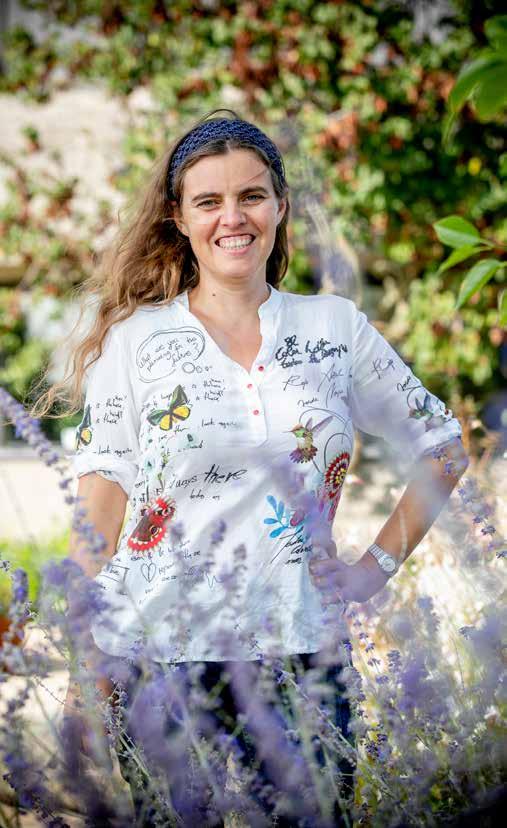
Glaucoma is a chronic eye disease that leads to irreparable damage of the visual field. It affects more than 60 million people worldwide. Only an early diagnosis can prevent blindness. However, this requires expensive and non-transportable equipment, which means that a large part of the population in developing countries is deprived of this aid. Esmael Kedir, PhD student at the e-Media Research Lab of Group T Leuven Campus, has developed an affordable and mobile solution. At the annual conference of the European Association for Visual and Eye Research, he won the Best Paper Award in the Glaucoma Category.
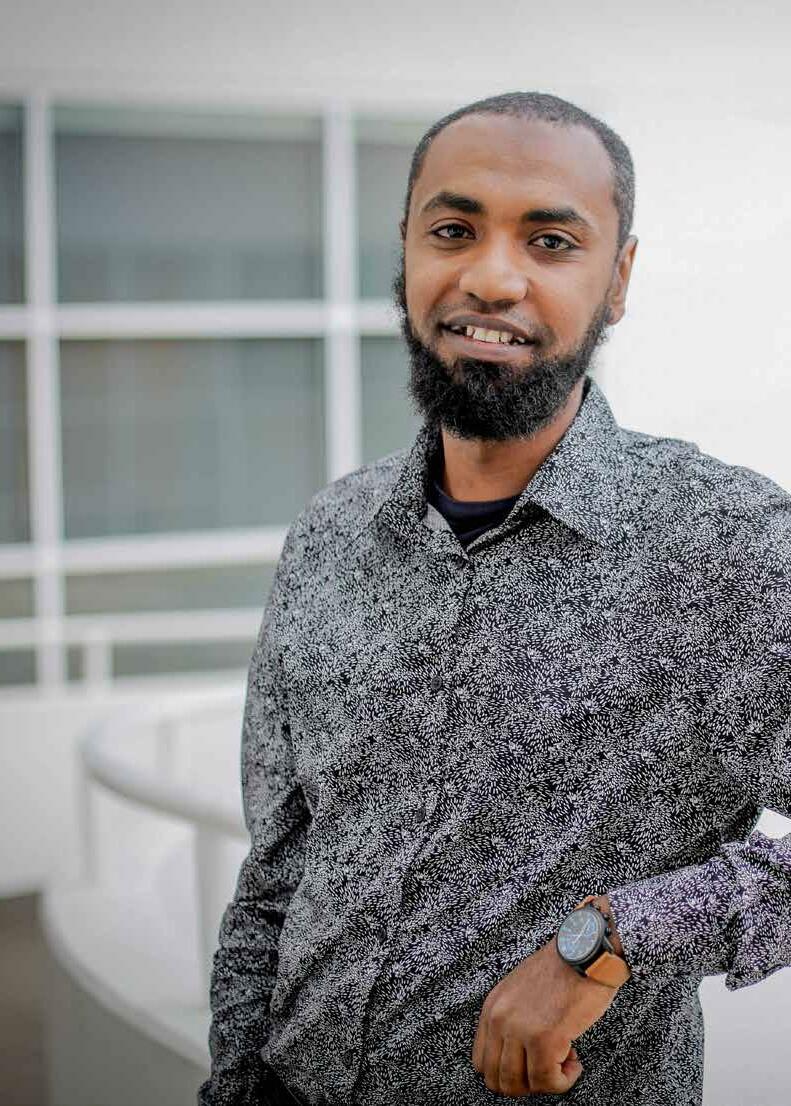
comes from Oromia, a region in Western Ethiopia. He went to school there and then studied Computer Science at Haramaya University (BSc) and Addis Ababa University (MSc). After graduation, Esmael became lecturer at Jimma University, a partner university of KU Leuven. The collaboration between the two universities brought Esmael to Leuven in 2016, first as a predoc, then as PhD student at Group T Leuven Campus.
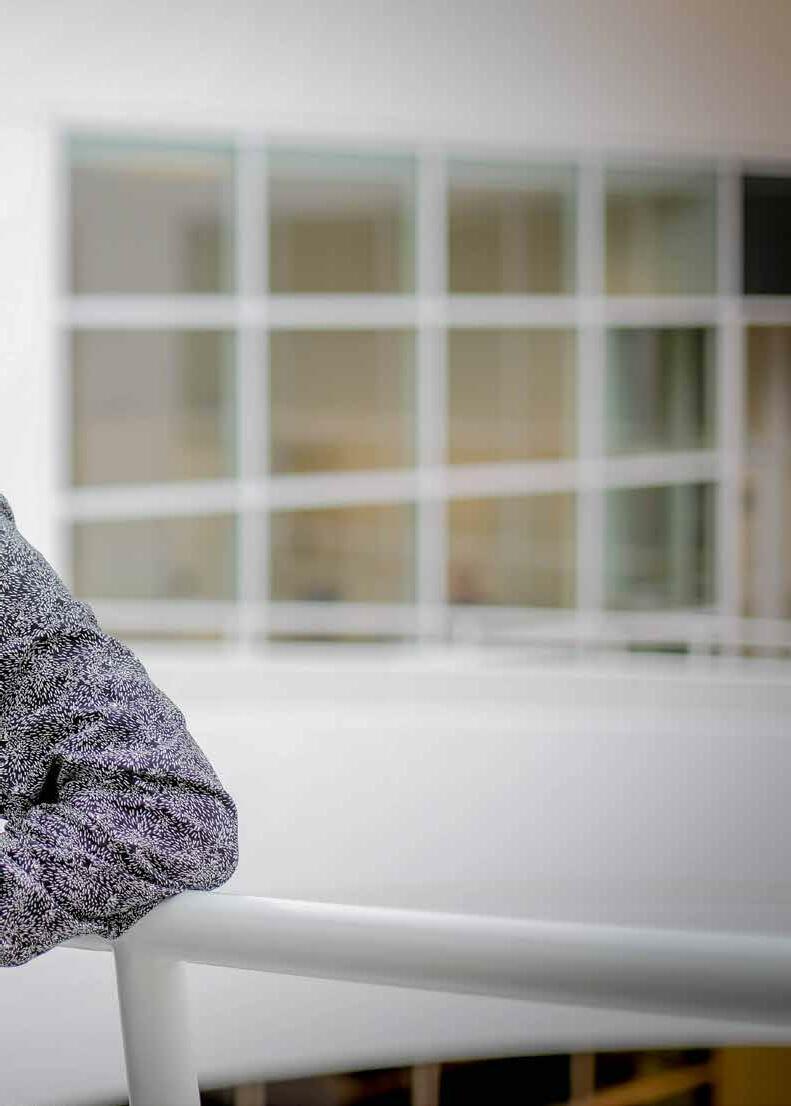
“As a miracle there was a project that was, as it were, written for me”, Esmael explains. “As you know, the e-Media Research Lab is specialised in human centred systems that can be applied in various areas such as health care, learning, arts and entertainment. Shortly before my arrival, a proposal had been received from the Ophthalmology Department of the Leuven University Hospitals to develop a visual screening tool for the detection of a malignant eye disease: glaucoma. Not only did this offer fit in perfectly with the activities of the lab, it also enabled me to contribute to a better health care in my home country”.
What exactly is Glaucoma? Esmael describes it as follows: “Glaucoma is caused when pressure builds up inside the eye, damaging the optic nerve that connects the eye to the brain. If it is not treated in time, it may cause irreversible blindness. It is thought that 4.5 million people across the globe are blind because of glaucoma, making it the third highest cause of blindness worldwide. The condition is difficult to diagnose because symptoms do not appear straight away. Instead, they develop slowly over many years. That is why glaucoma is called ‘the silent thief of sight’. This means that many patients only seek treatment when they notice they are losing their sight, when significant damage has already occurred. Prevention through early detection is the only effective remedy for the time being”.
“That’s exactly where the problem lies”, Esmael continues. “In many countries, the detection equipment is not available to the inhabitants of poor rural areas. This gave us the idea to come up with an affordable and mobile solution. After a thorough study of the devices in the University Hospitals in Leuven, we decided to develop an Android app for a smartphone that can function as an alternative Glaucoma Easy Screener (GES)”.
Esmael’s tool consists of a virtual reality head set, a smartphone and a gaming joystick. “The smartphone sends light signals that vary in size and intensity to the headset. The test subject uses the joystick to indicate if he/she has observed something in the visual field. If it turns out that certain signals are systematically not or incorrectly responded to, the local nurse knows that something is wrong. What is more, the tool allows him/ her to determine where in the visual field the problem arises. The nurse can then refer the person in question to the hospital for the treatment of the disease in the making.”
For his research, Ismael works closely with the Ophthalmology Department of the University Hospitals in Leuven and the Medical Centre of Jimma University in Ethiopia. Several versions of his application have been tested and validated in Leuven. In addition to the clinical validation, usability tests have been carried out at Jimma University. The results are promising. In terms of specificity and sensitivity, Esmael’s tool easily achieves 85 to 90% of what the professional equipment in university hospitals can do”.
Other critical success factors of Esmael’s tool are its user-friendliness and cost. “A complete test run on site takes about 10 minutes: 2.5 minutes for the test itself and the rest for explanation. The cost of the complete set, including the smartphone, is 200 euro, which is only a fraction of the price of the specialized equipment in hospitals”. Esmael is convinced that he has developed an affordable, accessible and effective testing platform that can significantly improve the quality of life and prospects of countless potential eye patients in Ethiopia and elsewhere in the world. “Even if the silent thief of sight is still sneaking around in the poor rural areas, he will soon be faced with an unexpected strong resistance”, Esmael concludes.
On 4 February 2020, H.M. Queen Mathilde was a guest at the Alamire Foundation, the interdisciplinary study centre of music in the Low Countries, located on the site of Park Abbey in Leuven. The programme featured a performance of Prof. Toon van Waterschoot’s Alamire Interactive Sound Lab (Group T Leuven Campus).
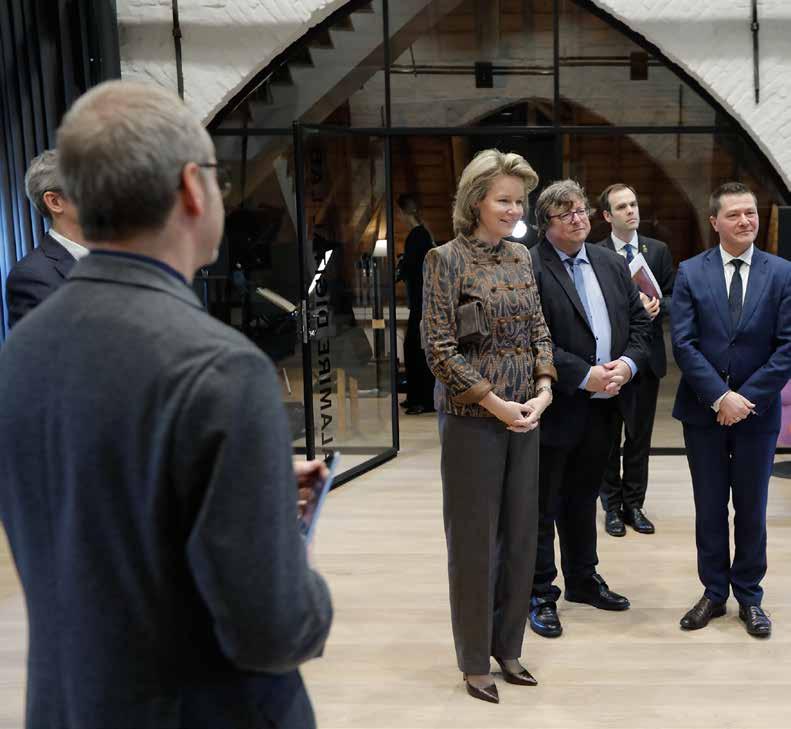
The Alamire Foundation was founded in 1991 and set up as a joint venture between KU Leuven (Research Group Musicology) and the Musica impulse centre. Purpose of the foundation is to coordinate and stimulate the research of early music, more in particular the rich Flemish polyphony. Special attention is paid to identifying and conserving this valuable heritage and making it accessible to performers and the public. The recently restored Norbert Gate of Park Abbey in Leuven houses the Library of Voices, where precious musical manuscripts are unlocked, digitised and prepared for performance by professional ensembles. The latter happens in two sound labs. In the Alamire Analytical Sound Lab by Prof. Bart De Moor, the complex stratification of polyphonic music is unravelled. The Alamire Interactive Sound Lab of Prof van Waterschoot concentrates on interpreting the polyphony in acoustic reconstructed historical spaces. Research is done in the Library of Voices in collaboration with the research department ESAT-STADIUS. In the House of Polyphony, the public gets to hear the results of the exploration. It houses its own concert hall and owns a collection of historical musical instruments.
Prof. van Waterschoot and his team investigate sound, not only as a physical phenomenon, but also as a carrier of information in communication, between people and between man and machine

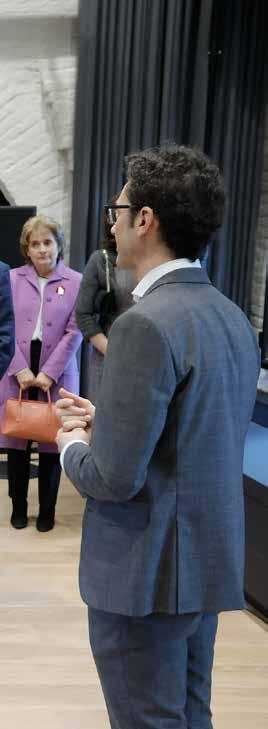
and environment. This resulted in a multidisciplinary research methodology in which engineers, mathematicians, musicologists and implementers work together. A subdomain of this research is the so-called “archaea acoustics”, more specifically, the reconstruction of church acoustics in the late Middle Ages and its impact on the implementation of the Gregorian and polyphonic music in the Low Countries.
From the 15th century onwards, popes, princes, courtiers and noblemen greatly admired the stars of the new polyphonic music, also kown as the ‘Flemish polyphony’. The ‘Fiamminghi’ were the idols of their time, with true cult figures like Guillaume Dufay, Johannes Ockeghem, Josquin Des Prez, Jacob Olbrecht, Pierre De la Rue... Peter Alamire (Nuremberg 1470 - Mechelen 1536) -after whom the Leuven Foundation is named- made them ‘world-famous’ with exquisitely illuminated copies of their work; the European dynasties’ most important business gift for a long time. Petrus Alamire was actually named Imhoff. His stage name refers to the pitch A and the notes lami-re. Since 2018, H.M. Queen Mathilde is the Patroness of the Alamire Foundation in Leuven.
Yves PersoonsIn June 2019, the Erasmus+ Joint Project ‘Higher Engineering Training for Environmentally Sustainable Industrial Development’ (HETES) has been selected as a ‘success story’ by the Directorate-General for Education, Youth, Sport & Culture of the European Commission. Project coordinators Prof. Philippe Saey and Geert De Lepeleer of Ghent Technology Campus proudly look back on their achievement.
Like most countries of the former Soviet Union, Ukraine carries a heavy burden from the past”, Prof. Saey explains. “An outdated heavy industry, pollution of soil, water and air and a higher education system that is not adapted to current and future challenges.

On its own, no country in the world can cope with all these problems. A globalized economy and environmental and climate issues require international crossEuropean cooperation. For Ukraine, this implies a complete industrial transfor mation to ensure a sustainable future. Therefore, the country needs an adjusted higher education system that trains engineers and scientists equipped with the necessary knowledge and skills to respond effectively to these challenges”.
“This immediately brings us to the essence of our project”, Prof. Saey continues. “The development of a country like Ukraine stands or falls with highquality higher education. The purpose of our project was to improve the relevance of engineering education toward challenges of current and future industrial transformations aimed at sustainable development and climate stabilization. More specifically, we focused on four objectives. First, we wanted to develop a
training course covering environmentally sustainable sectors such as Mining, Metallurgy, Energy, Machine Construction and Mechatronics. A second objective was the integration of multidisciplinary environmental issues into the existing engineering curricula. Further, we envisaged the installation of an Interfaculty Sustainable Development Centre in five engineering faculties. And – last but not least – we wanted to create a platform for networking between academia, research, industry and the local and national authorities toward the needs of a sustainable society”.
In order to achieve these ambitious goals, the coordinators of Ghent Technology Campus established a European consortium consisting of five Ukrainian universities spread over the country, the Ukraine Ministry of Education and five universities from Belgium, Spain, Sweden and the UK. The business world was represented with Volvo Cars as the most important industrial partner.
“On paper everything was fine, but in practice it did not go that smoothly”, Geert De Lepeleer continues. “Barely one month after the kick-off meeting, the Crimea was annexed by Russia and pro-
Russian rebels occupied a part of East Ukraine. Because of the conflict, the Sevastopol National Technical University had to drop out early. The Donesk National Technical University could start only after the campus had been evacuated to a safer place. In addition, due to a shortage of gas and the sharp rise of the energy prices, universities had to close their doors from December 2014 to the end of February 2015”.
In spite of these obstacles, the coordinators have wonderfully succeeded in achieving the objectives. Prof. Saey lists the results: “The training course ‘Environmentally Sustainable Industrial Development was completed on time and has already been taught to 450 MSc and 120 PhD students. In each of the five universities, the curriculum was adapted to include environmental topics in six disciplines. More than 150 staff members were able to familiarise themselves with educational innovation and university governance on sustainability. In addition, an Interfaculty Sustainable Development Centre was set up at four universities to stimulate and support multidisciplinary education and research. Finally, the distance learning system was perfected and a lifelong learning programme on Environmentally Sustainable Industrial
Development was set up. For Ukrainian companies, there are case studies and best practices from the EU on sustainability issues”.
Actually, the list of deliverables is much longer and includes study visits, workshops, conferences, a website and more than 30 papers. The eye-catchers are the monography ‘Sustainable Development of Steel Industry’ and the textbook ‘Environmentally Sustainable Industrial Development’, both published by the National Metallurgical Academy of Ukraine.

For those who do not yet realise what a ‘success story’ means or stands for, there is still the ‘official’ definition: ‘Success stories are finalised projects that have distinguished themselves by their impact, contribution to policy-making, innovative results and/or creative approach and can be a source of inspiration for others’. The Directorate-General for Education, Youth, Sport and Culture of the European Commission motivated its decision regarding the HETES-project as follows: “The selection of your project as a success story was made on the basis of rigorous criteria regarding its quality, relevance and results”.
Prof. Saey and Geert De Lepeleer do not need anything else to continue on the chosen path. They are currently preparing a new project in collaboration with industrial partners on Industry 4.0, smart factories and the fusion of digitalization with traditional industrial processes. We have every reason to believe that another success story is being made.
Yves Persoons
“The development of a country like Ukraine stands or falls with high-quality higher education.”
On 8th May, UNA EUROPA concluded UNA. TEN – “Transform Emergency Now! 10 days for change”. UNA.TEN was set up as a panEuropean student hackathon to tackle challenges in COVID19 post-emergency times.
Based on an open innovation design process, student teams from all participating UNA EUROPA universities joined forces with local partners to find solutions to four specific COVID-related challenges: Rethinking entertainment and culture, (2) Securing privacy and preventing misconceptions in a digital world, (3) Ensuring traveller safety, and (4) Avoiding food waste.
EUROPA is a unique alliance of eight European research universities, with KU Leuven as one of the leading members. Funded among the first “European University” pilot projects selected by the European Commission in June 2019, UNA EUROPA’s 1Europe project will establish a Europe-wide living lab for testing Joint Innovative Formats for education and mobility.
One of KU Leuven’s four student teams in the UNA.TEN challenge was set up by KU Leuven KICK in collaboration with Technovation Hub of the Faculty of Engineering Technology.
Chrisje Haenen, Executive Committee Member of Technovation Hub, together with the coaches Rudi Lenaerts (Laurion BV) and Prof. Wim Van Petegem, joined forces to support the student team on the “online digital consent” theme. The team
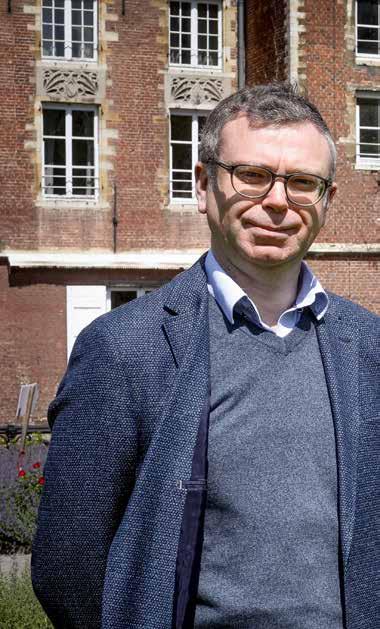
worked on the question of “How to protect our privacy and help fight dangers, fears, and misconceptions in a digital world?”
Drive environment ensured a fluent sharing of insights and materials. This resulted in a new, challenge-based type of collaboration with virtual mobility.
“Actually coaching this team was easy,” explains Prof. Van Petegem. “We started each day with a short stand-up meeting with the team. Our main role as coaches was to bring students in contact with stakeholders in the field of education, research and industry so that they could get feedback for their ideas”.
The student team worked ten days intensively and in an agile way on this challenge, with sprint meetings every day and four intermediate milestone meetings where they met with other teams in Bologna and in Krakow working on the same challenge. A Slack and Google
Jorrit Willaert and Anirudh Pabba, two of the team members, add: “The multidisciplinarity in the team proved to be a main asset in coming up with an approach to the challenge. The mix of expertise in our team with law (from Isidora González Ríos, a third team member), science (Anirudh) and engineering (Jorrit) turned out to be very successful, and resulted in a holistic experience.”
“The multidisciplinarity in the team proved to be a main asset in coming up with the challenge”.
The roles in the team were clearly defined in the first few days. Anirudh took the responsibility as a project planner, whereas Isidora worked on the legal and juridical aspects and Jorrit was responsible for the practical implementation of the choices
made. All their hard work eventually resulted in a blueprint for a customisable add-on for browsers to protect the user’s digital rights. Needless to say that this solution was highly appreciated by all participants of the final presentation at the end of the two weeks challenge.
“I was pleasantly surprised by the eagerness and the willingness of the team to pick-up the challenge and to really deliver a solution” adds Rudi Lenaerts, “Moreover, working with an international team (Anirudh is from India, Isidora from Chile and Jorrit from Belgium) added an extra very positive dimension to it”.
In total, UNA.TEN attracted more than 100 students who worked together in 19 teams, in this way paving the road for challenge-based learning, not only in times of virtual mobility, but maybe for the future of higher education in Europe and beyond.


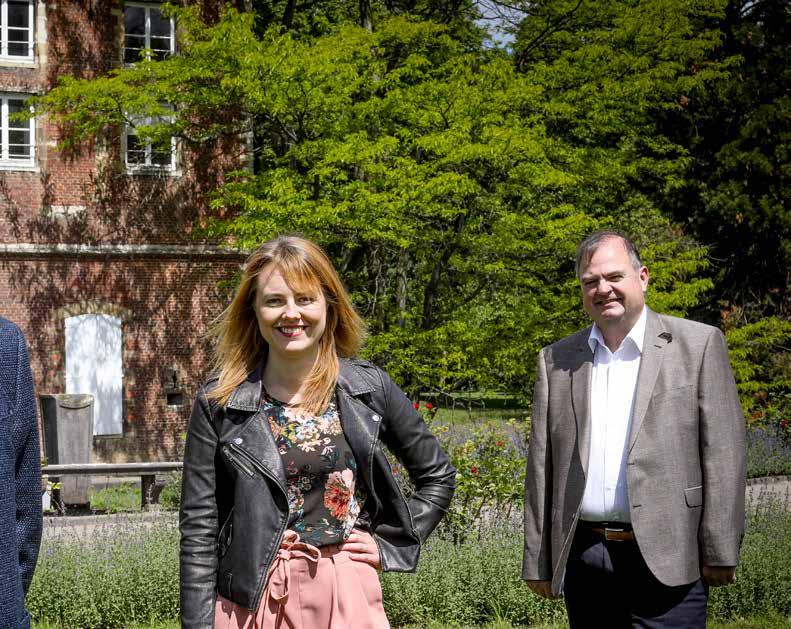

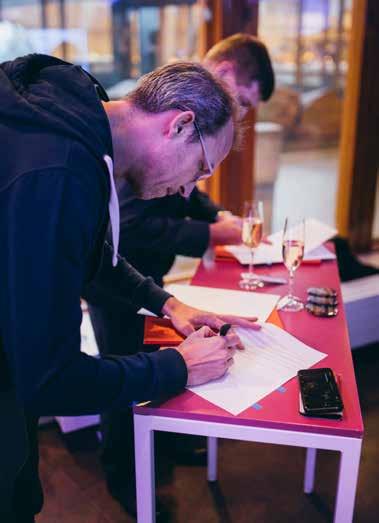
Tuesday 8 January 2020 was a special day at Aalto University. The institute not only celebrated its 10th birthday, but also the entry of the 30th member to the Design Factory Global Network (DFGN). Chrisje Haenen and Stijn De Jonge, administrators of Technovation Hub, could not have imagined a better time to sign the cooperation agreement in Helsinki.
Chrisje Haenen looks back in time. “Technovation Hub is an initiative of the Faculty of Engineering Technology. It was founded five years ago with the support of the Science, Engineering & Technology Group of KU Leuven to support the emerging engineering talent on the campuses and at the same time to be the incubator of new and promising projects. There are already six student teams under the wing of Technovation Hub, each of which is an example of entrepreneurship and innovation. One of them, the Agoria Solar Team, became world champion in the World Solar Challenge in October 2019. These examples work contagiously, also within our community. We found that the time was ripe to push the boundaries and to look for like-minded partners in other countries and continents”.
These like-minded partners were found in DFGN. “What brings us together is passion-based co-creation”, Stijn De Jonge explains. “The network consists of innovation hubs such as ours that are active in universities and research centres around the world, from CERN in Geneva to Tongji University in Shanghai. Design Factories are platforms for experimentation, action and co-creation. In addition to the local activities of each factory, there are also numerous shared initiatives.”
“One of the basic principles of a Design Factory is that innovation is not something that is accomplished by an individual. Instead, innovation is by definition a social and a collaborative matter. Another important characteristic of a Design Factory is the revaluation of the concept of ‘space’. Creativity needs a space
that is separated from the activities of daily working life. Building a space away from the routine job is key to enhancing a team’s creative capability. At Aalto University, Design Factories can have spaces ranging from 5 to 5,000 m². Interesting in that context are the ‘traveling projects’ that literally move to the locations where the most suitable expertise or equipment can be found”.
As a recognized Design Factory, Technovation Hub 2.0 pursues a dual goal. “Our main assignment is to encourage even more scientific or engineering students to participate in team projects, both inside and outside the curriculum”, says Chrisje Haenen. “Therefore, we want to appeal to our partner companies more than ever to serve as a commissioner or a client. It encourages the teams to think more thoroughly about the valorisation of their concept or product.”
“A second goal that we have in mind is a proper location where the teams can get to work. The space we dream of is a casual meeting area as well as a learning environment that facilitates the making of physical artefacts and is accessible to the local and global academic and business community through a virtual window. We are therefore looking for a location that allows different ways of learning, working and sharing in a single space. We are convinced that Technovation Hub 2.0 will soon have its own place in the sun”.
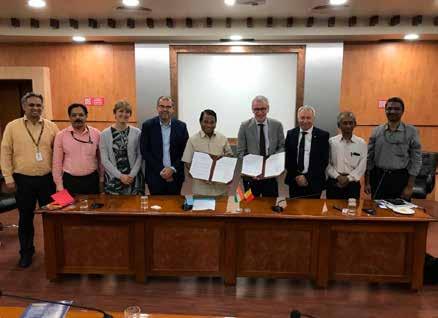
On 9th January 2020, a Cooperative Education Programme in Bachelor of Engineering Technology was launched in Vellore (India). It opens the door for Indian bachelor students to continue their studies at Group T Leuven Campus after two years of study at their home university and to obtain a bachelor’s degree from KU Leuven. The first batch of students is expected in the fall of 2020.
title ‘N° 1 Indian Private Institution of Innovation’ and was recognised as an ‘Institution of Eminence’ by the Indian government. With over 300 International Cooperation Agreements, VIT’s range of action covers the entire world.
new cooperative programme is preceded by a history that begins with the visit of a delegation from the former University College Group T to Vellore Institute of Technology (VIT) in 2012. After the integration of Group T’s engineering programme in KU Leuven and a visit by Rector Luc Sels to India, the cooperation became definite which led to the signing of a Memorandum of Understanding in Leuven in April 2019.
VIT is a young private university with four campuses in Vellore (Tamil Nadu),
Chennai, Bhopal and Amravati Andhra Pradesh. At these campuses, more than 25,000 students are enrolled in 52 undergraduate programmes, 32 postgraduate, 11 integrated MS courses and 4 research & industrial programmes in Engineering, Technology, Applied Sciences and Management. VIT was among the first universities in India to implement the Fully Flexible Credit System (FFCS), which gives the students the flexibility to make their own timetables by choosing the subjects and the faculties under whose guidance they want to study. Recently, VIT received the honorary
The agreement signed by Prof. Govin dasamy Viswanathan, founder and Chancellor of VIT, Prof. Gerard Govers, Vice-Rector of KU Leuven and Prof. Bert Lauwers, Dean of the Faculty of Engi neering Technology may be summari sed as follows: students enrolled in the B.Tech- Mechanical Engineering Pro gramme at VIT can be nominated to enrol in the Bachelor of Science in Engi neering Technology, specialisation Elec tromechanical Engineering at KU Leuven. Each nominated student has successfully completed two years fulltime study at VIT and needs to present good to excellent academic records and meet all admissions requirements of KU Leuven, including language proficiency. After completion of the 2nd and 3rd year of the undergraduate programme at Group T Leuven Campus, the students receive a Bachelor’s degree from KU Leuven and are automatically admitted to an English language master pro gramme in a relevant major offered by the Faculty of Engineering Technology.

On January 29, 2020, Prof. Luc Sels, rector of KU Leuven and Prof. Woo-Seung Kim, president of Hanyang University (South Korea) signed two cooperation agreements. The first deals with the set-up of joint research projects. The second relates to the exchange of students with the Faculty of Engineering Technology
Thanks to ERICA Campus (Education Research Industry Cluster at Ansan), HYU is recognised as the most active industry cooperation university in South Korea combining research and education with business. ERICA Campus is famous for its cluster programme in which students acquire knowledge and skills that make them immediately employable in professional practice. The figureheads -the so called ‘proud Hanyangians’include Chung Mong-koo, Chairman of Hyundai Motor Group and Yoon Bookeun, CEO of Samsung Electronics.
Three
years of preparation preceded the signing ceremony at the Rector’s Office in Leuven. In June 2017, Prof. Sabine Vercruysse, Vice-Campus Chair of Group T Leuven Campus and Wim Polet, Director of the International Office, paved the way during the official Belgian trade mission to South Korea. In November 2017 and 2018, Director Wim Polet continued negotiations in Seoul, resulting in the signing of a Memorandum of Understanding during Rector Luc Sels’ visit to Hanyang University (HYU) in March 2019.
HYU started in 1939 as the first
engineering institute in Korea. Currently, the university is generally regarded as an essential part of the growth machine that has made South Korea an economic and technological global player. HYU has campuses in the capital Seoul and the nearby city of Ansan. Together they count 25 colleges and 107 departments, representing 24,500 undergraduate and 8,300 graduate students. The university welcomes 7,500 foreign students annually and more than 3,000 students go abroad every year. HYU counts Massachusetts Institute of Technology (MIT), University of Cambridge and Tsinghua University among its 820 partner universities in 88 countries.
After the signing ceremony, President Woo-seung Kim and his retinue were received at Group T Leuven Campus. Professors Ronald Cools, Bert Lauwers and Peter Slaets gave a presentation about, resp. the Science, Engineering & Technology Group, the Faculty of Engineering Technology and the research on Autonomous Vehicles. The programme also included visits to the Department of Electrical Engineering, more specifically the research group of Prof. Sofie Pollin, the inter-university microelectronics centre IMEC and the high-tech company Materialize, specialized in 3D printing.
The annual recruitment missions of Group T Leuven Campus along the Chinese partner universities is an excellent opportunity to bring the alumni together on the spot. In Shanghai and Beijing, where KU Leuven has its own Alumni Chapter, it has already become a classic. Meanwhile, the initiative is being extended to other cities as well. On Friday 1 November 2019, it was the turn of the southern Chinese city of Shenzhen. The reason was the visit to the Southern campus of Harbin Institute of Technology, a high-ranked university in China and a new partner of KU Leuven.
SinceShenzhen was elected China’s Special Economic Zone, the small fishing village of 35 years ago has grown to be one of the largest cities in the world. Along the way, it also became the manufacturing heart of the global tech industry. Over the past decade, the city has become a world leader in technological innovation, rather than a place where one buys cheap electronics. It meant the move from ‘Made in China’ to ‘Designed in China’. Today, Shenzhen is home to some of the biggest high tech companies
in the world, such as Internet and gaming giant Tencent, the telecom firm Huawei, smartphone maker ZTE as well as the world’s largest drone maker DJI and robot producer Makeblock. It is estimated that about 90% of all digital products worldwide contains one or more components from Shenzhen. Appel also has its iPhones manufactured in Shenzhen. Design City has become the gateway to Shenzhen for the rest of the world and vice versa.
At the first reunion in Shenzhen, ten alumni from Group T Leuven Campus were present. They are working at Huawei, 01NNT, Deacons, Foxconn and Melexis. They are already looking forward to the next edition and to the moment when a KU Leuven Alumni Chapter will be founded in their city.
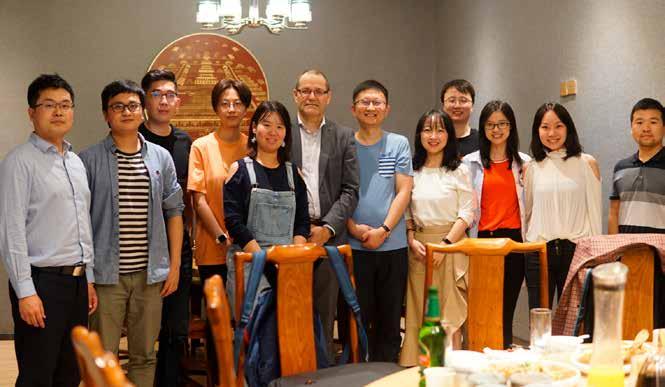 Yves Persoons
Yves Persoons
A living signboard of the Faculty of Engineering Technology and at the same time a model ambassador of KU Leuven abroad. Both descriptions apply to Lin Zhang. As an alumnus of Group T Leuven Campus, he is not only a brilliant engineer, but also a driven entrepreneur and an inspiring educator. It was therefore obvious that he was appointed as the first Chairman of the new KU Leuven International Alumni Chapter Beijing.
Zhang arrived in Leuven together with 30 fellow students from Beijing Jiaotong University (BJTU) in 2003. It was a record number of students that has not been matched since. “It was quite a job before we could leave”, he remembers vividly. “We arrived with a month’s delay due to the consequences of the SARS epidemic. It was hard to make up for the missed lessons, but once we had met, everything went smoothly”.
At Group T Leuven Campus, Lin Zhang studied Electronics & ICT Engineering Technology option Hardware Design. He gained his first business experience at the high-tech company Agilent during his master’s thesis. It prompted him to follow an extra master’s in Industrial Management at KU Leuven after his engineering study. Both master’s degrees formed a solid stepping-stone for an academic career, first as a teaching assistant on Group T Leuven Campus, then as a PhD student and postdoc at the Department of Mechanical Engineering of KU Leuven.
In 2017, Lin Zhang decided to take a different approach and took his chance as an entrepreneur in China. He had already discovered a niche in the market in Belgium: a dire shortage of STEM (Science, Technology, Engineering and Mathematics) teachers to interest young people in the jobs of the future. In China, high schools appeared
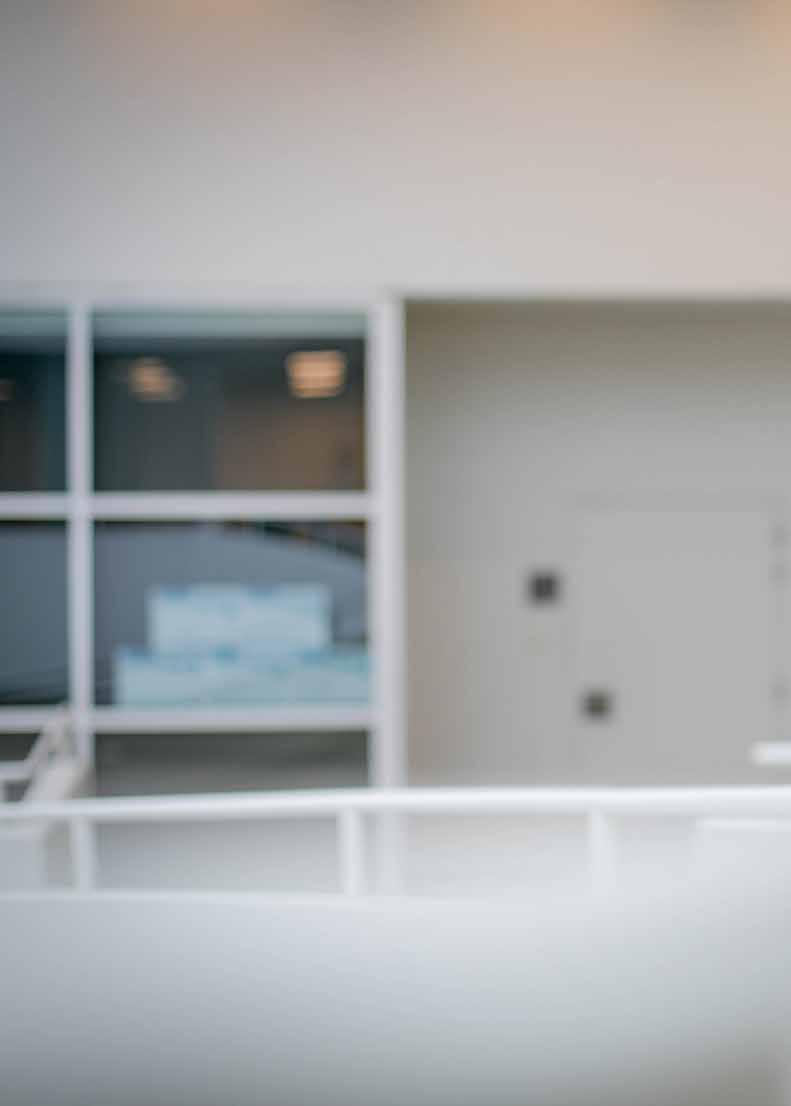
to be struggling with the same problem, so Lin Zhang started his own business as an educational consultant in STEM matters. His clients are high schools that he advises on the development and implementation of a STEM policy. This also includes educating teachers according to the ‘train-the-trainer’ principle and developing educational materials that teachers can use in their own class.
When on 24 August 2019 a new International Alumni Chapter was officially installed in Beijing together with the commemoration of the 20th anniversary of the Double Degree Programme in Engineering Technology from KU Leuven and BJTU, Martine Torfs, Director of the university’s International Office did not have to look for a pioneer for long. All the tracks led to the BJTU student who came to Leuven in 2003 to study and to teach and who runs his own business in Beijing today. Together with five like-minded colleagues, Chairman Lin Zhang forms a steering committee that is committed to connecting the 200 KU Leuven alumni in China’s capital with each other and with their alma mater in the far Leuven.
